A Holistic Approach to Treating Trauma and Addiction & Other Mental Health Disorders
Dr. Carissa Muth
Registered Psychologist (AB & BC)
Clinical Director – SCHC/GSWC



What is Mental Illness?




Dr. Carissa Muth
Registered Psychologist (AB & BC)
Clinical Director – SCHC/GSWC







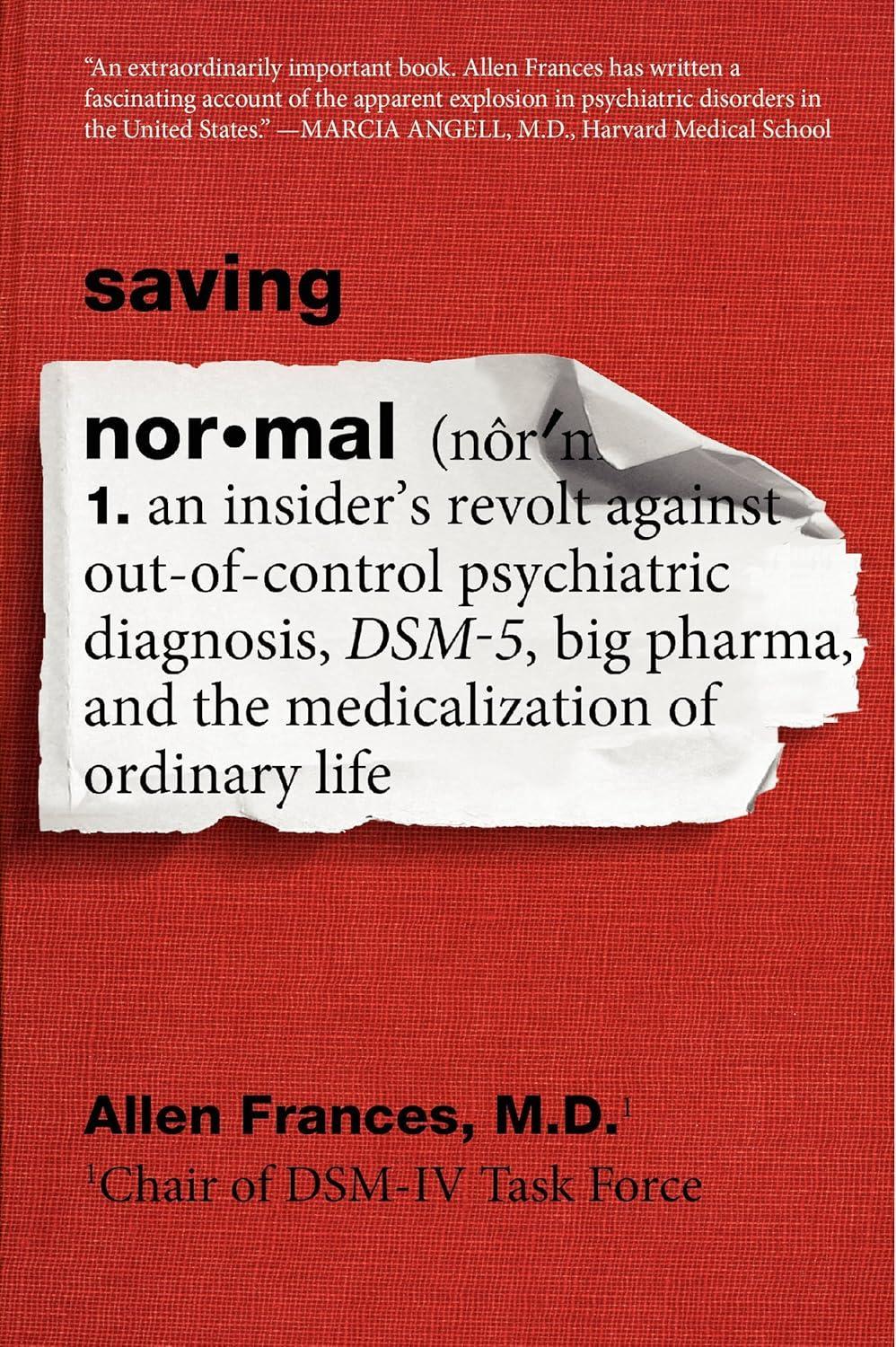

“Recovery is not about ‘getting rid’ of problems. It is about seeing people
beyond
their problems
- their abilities, possibilities, interests and dreams - and recovering the social roles and relationships that give life value and meaning”
- Slade, 2010

WHAT CAUSES HEALTH?

• What causes health?
• Assumes we are inherently flawed
• Reaching potential
• Treating gain or growth
• Proactive
• Realistic

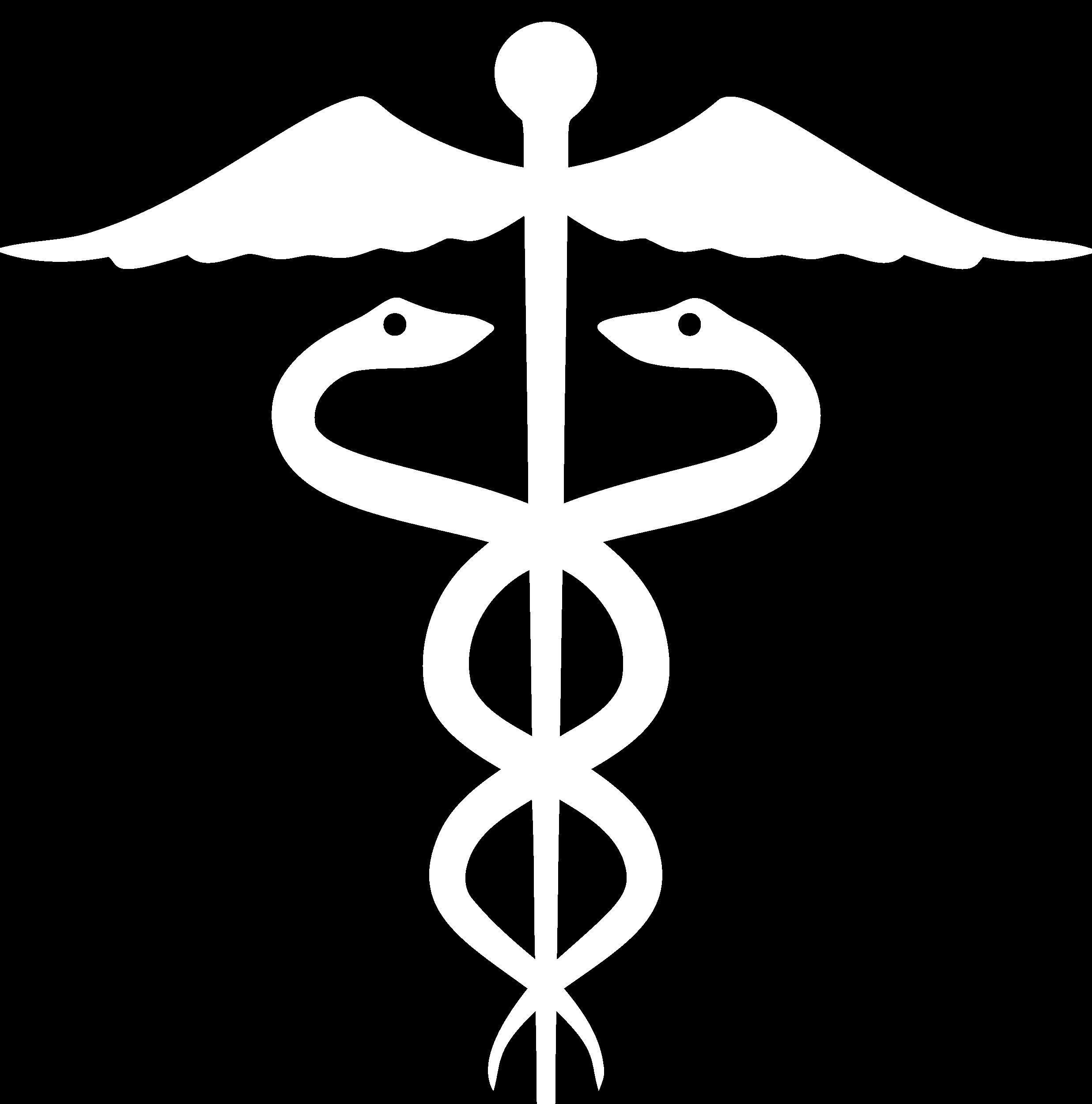
• What causes diseases?
• Assumes we are inherently healthy
• Avoiding problems
• Treating illness or disease
• Reactive
• Idealistic


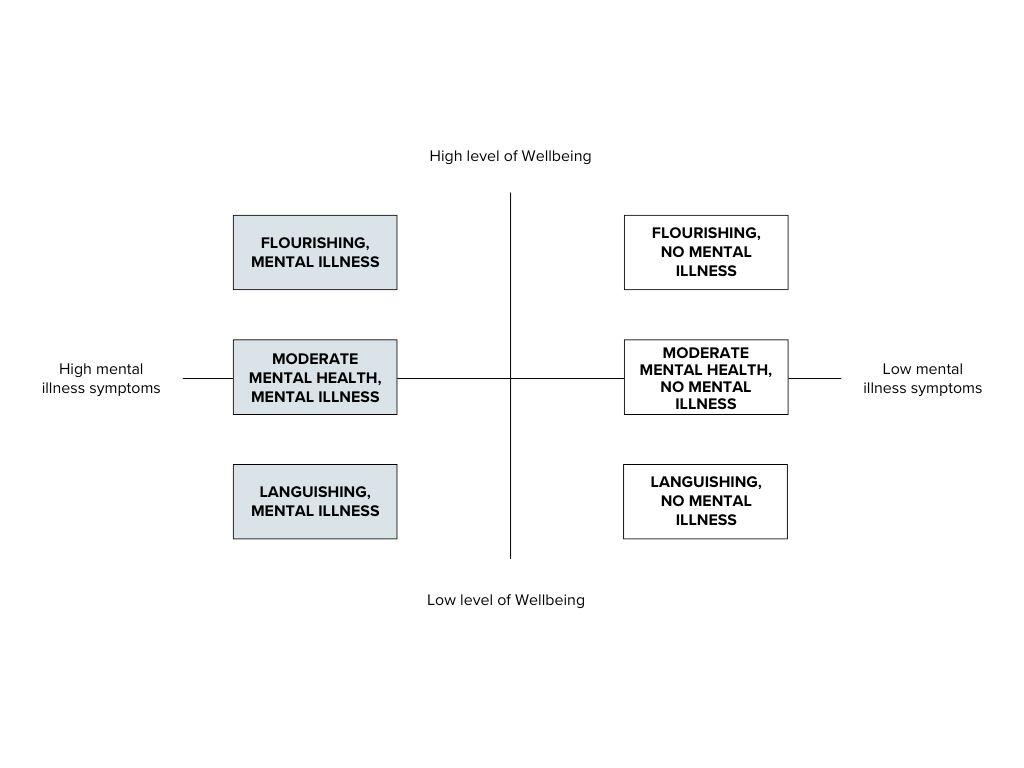
● Emotionally flattened - difficult to muster up excitement
● Life circumstances seem increasingly dictated by external forces
● Procrastinating on tasks as a “why-try-anyway” attitude
● More things strike you as irrelevant, superficial, or boring
● Unease that you are missing something that will make your life feel complete again but not sure what it is
● Feel disconnected from your own community and or/ a greater purpose or cause
● Brain fog
● Feel restless, even rootless
● Small setbacks leave you feeling defeated
● Hard to find motivation to reach out to friends and family
● Sense of self is “flickering or plummeting”




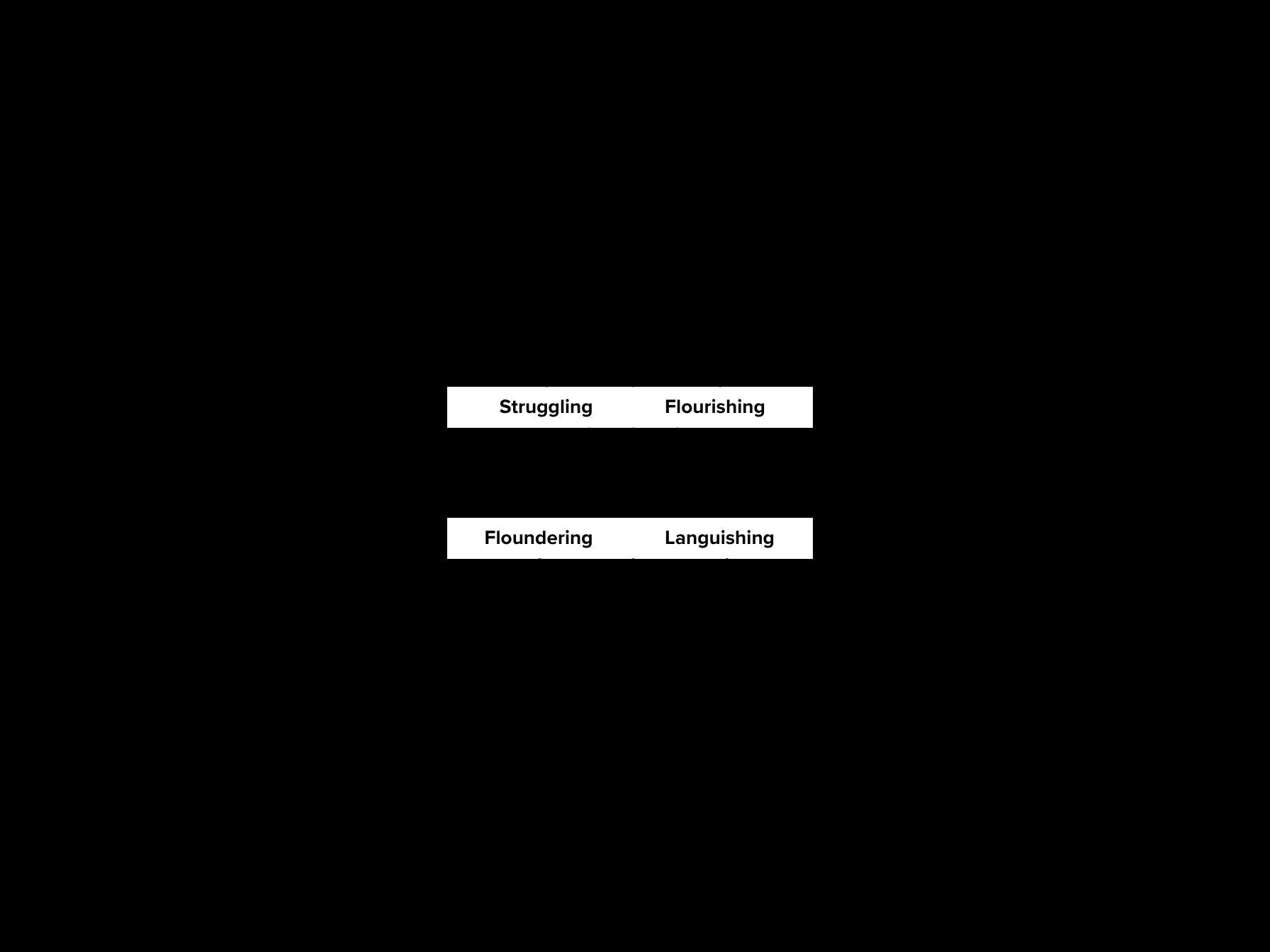
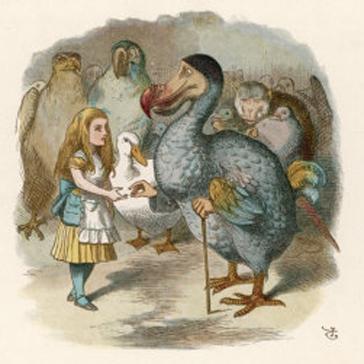

How one delivers a treatment is important, delivering an evidenced based treatment is not sufficient

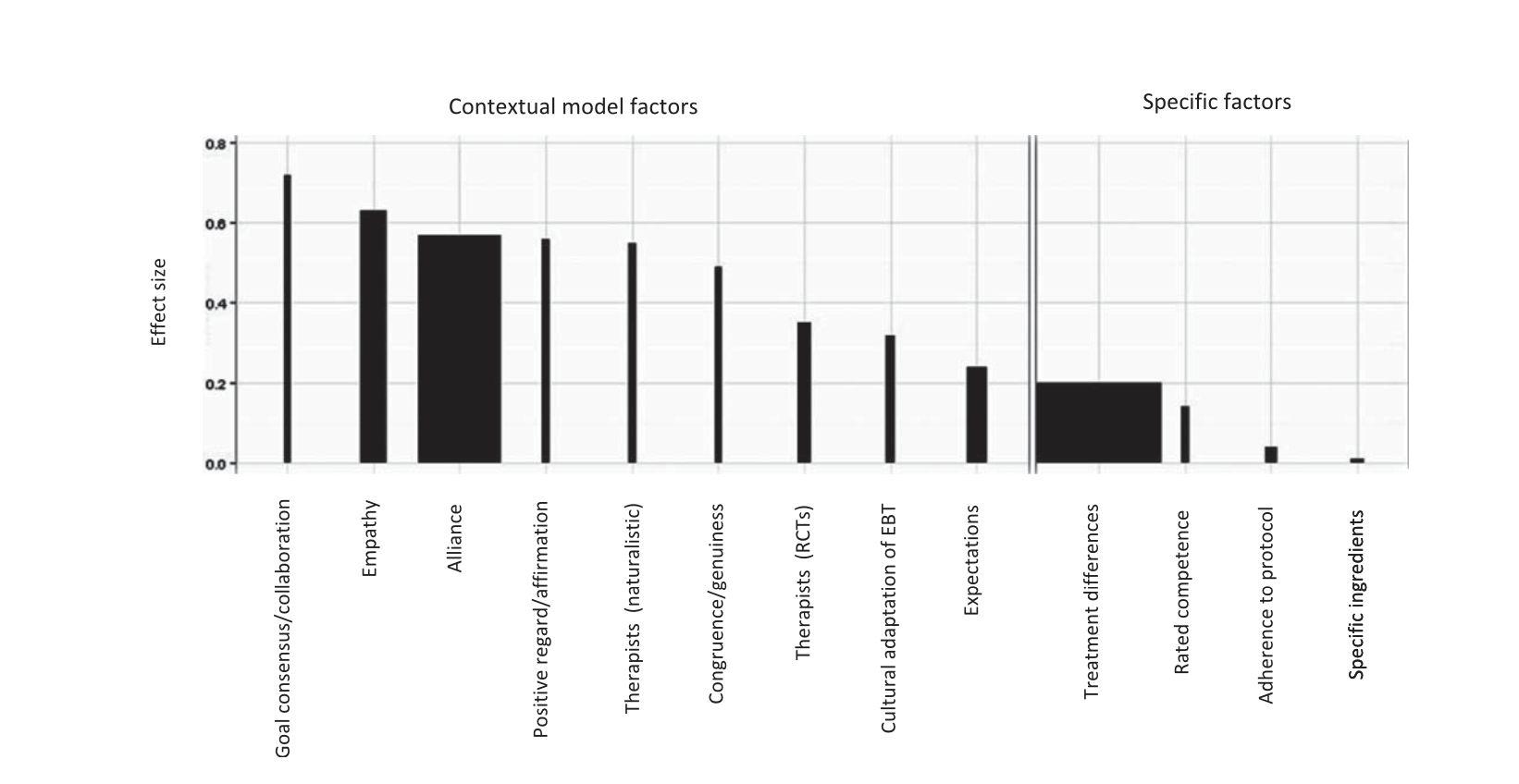

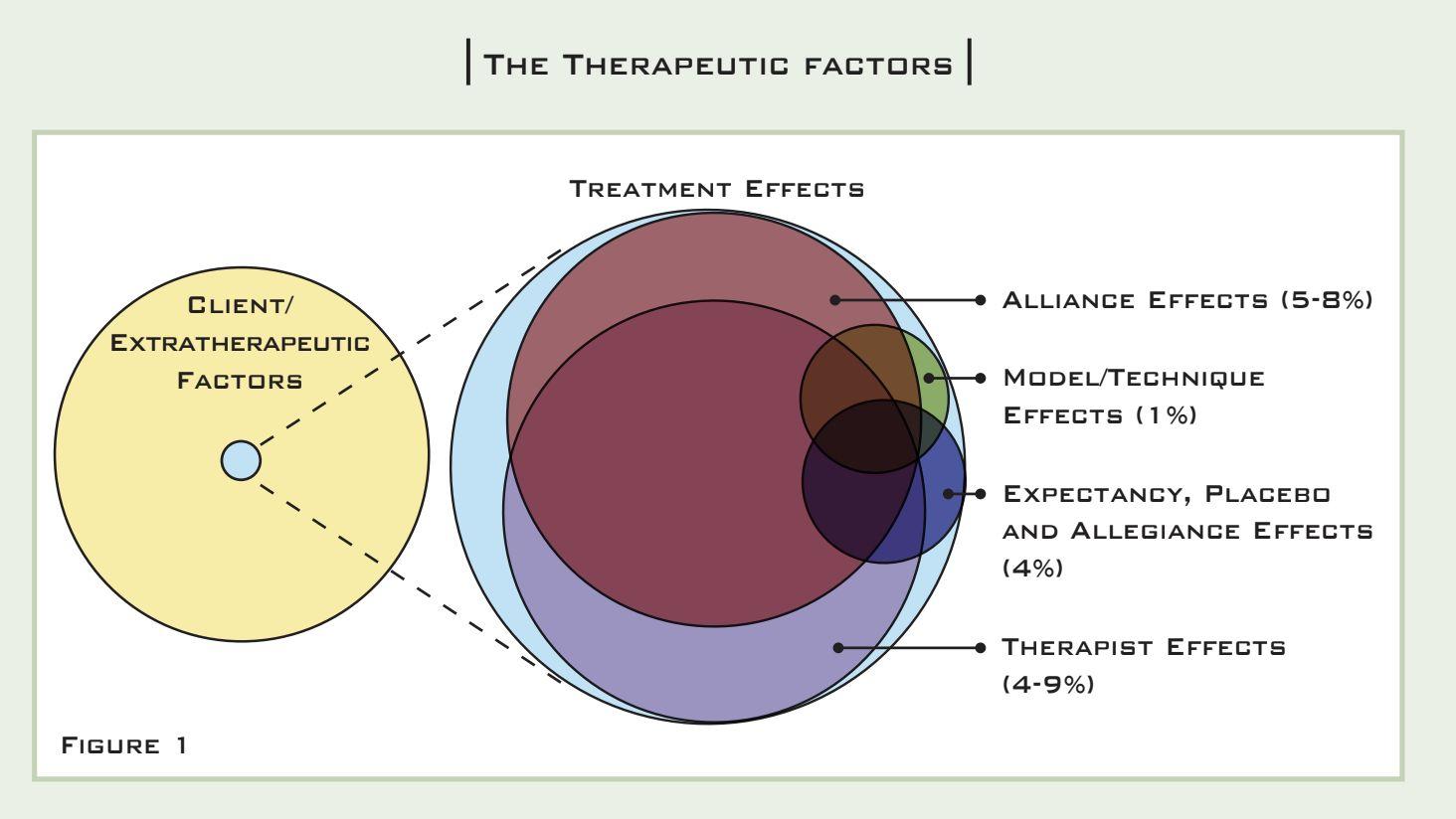

• Preponderance of evidence indicates that there are important therapist effects (3-7% of variability)
• Therapist effects general exceed treatment effects
• What are the characteristics and actions of effective therapists?
• Empathy
• Authenticity (real relationship)
• Ability to form strong alliances across the range of clients
• Interpersonal skills (Higher linked to better client outcomes)
• Verbal fluency
• Interpersonal perception
• Affective modulation and expressiveness
• Warmth and Acceptance
• Empathy
• Focus on other
• Reflective about practice

• Working Alliance
• Healthy, affectionate, and trusting feelings toward the therapist without transference
• Agreement about the goals of therapy
• Agreement about the tasks of therapy
• Bond
• Early symptom change may increase rates of alliance
• Placebo/ Expectation (Hope)
• Desire to feel relief
• Induction of an expectation that treatment can accomplish goal
• Presence of emotional arousal
• Attribution
• Client attributes changes to their own efforts (Self- efficacy increase)
• Acquisition of the belief that one’s efforts are responsible for improvement

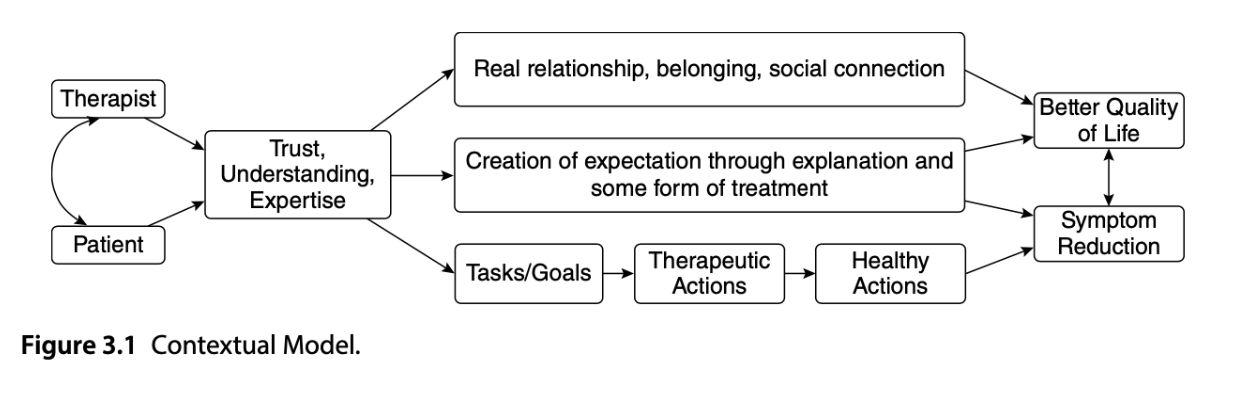




● In the previous International Classification of Diseases, version 10 (ICD-10) issued by the World Health Organization (WHO), this symptom constellation was termed ‘enduring personality change after catastrophic experience’. [14]
● A further milestone along the way to the current CPTSD formulation was the expert survey of the International Society for Traumatic Stress Studies on best practice treatment of Complex PTSD, in which 50 international experts were interviewed [15]
● Preference for sequential treatment, a primary focus on coping skills (including emotion regulation interventions), and on the narration of trauma memory (using various therapeutic techniques). Thus, despite the existence of very few randomized therapy studies, a basic consensus on the most important therapeutic goals was documented. [14]

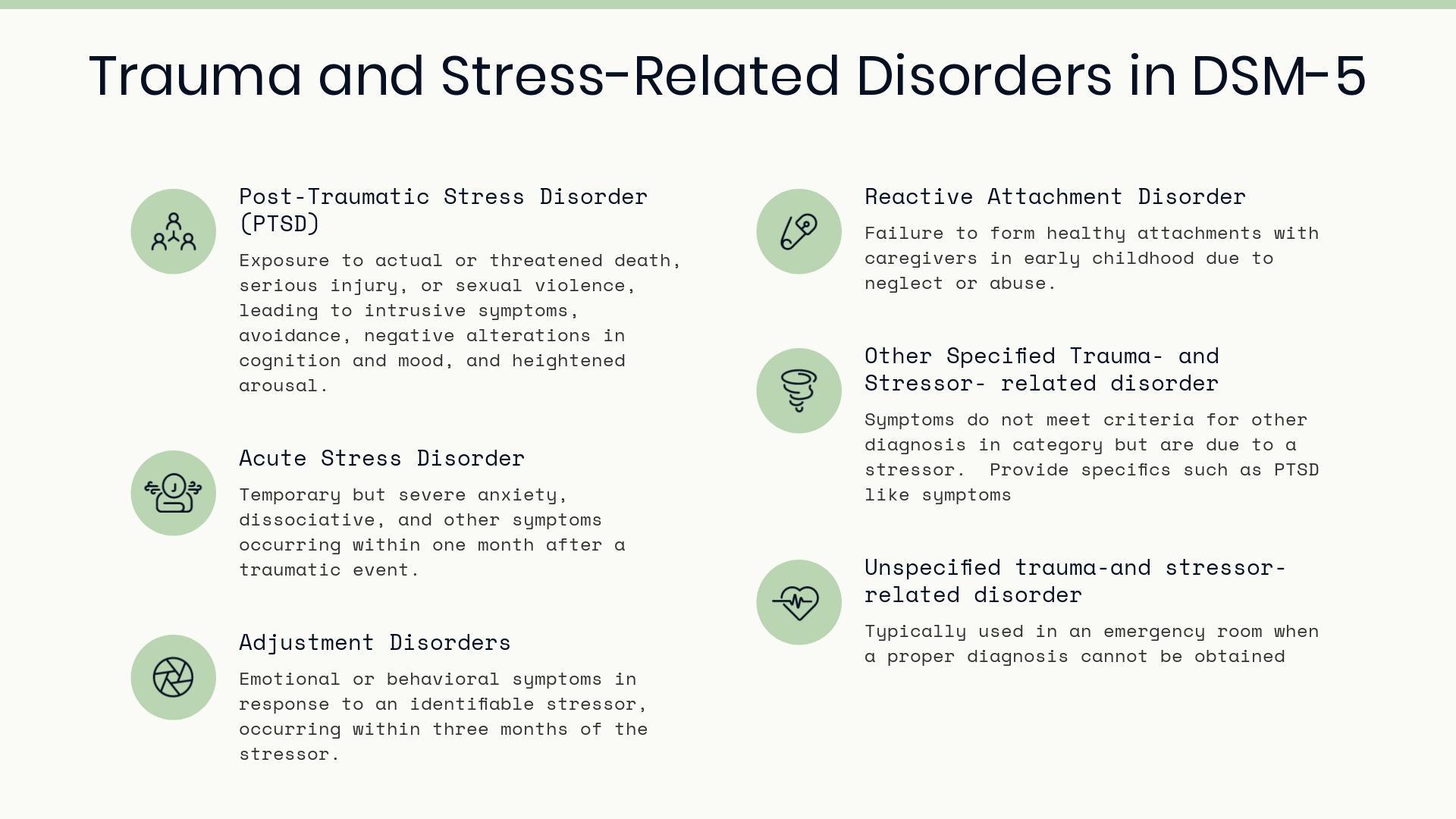

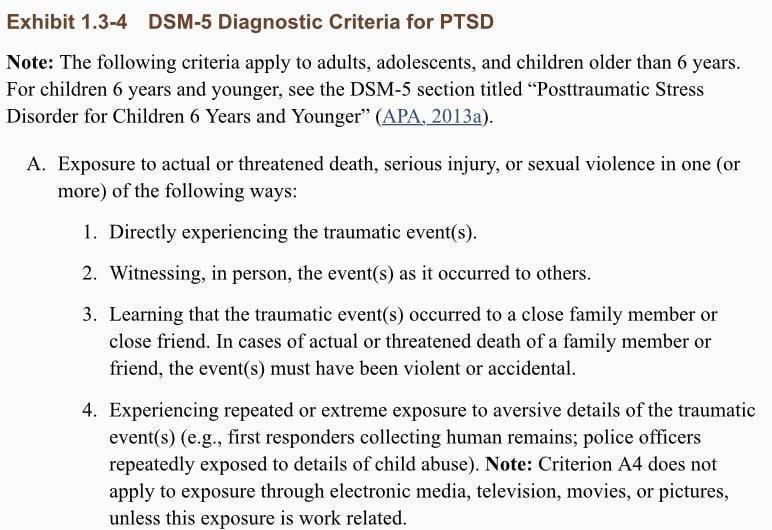

● Involuntary re-experiencing of traumatic event as unique characteristic [6]
● Re-experiencing of traumatic event often accompanied with painful emotions
● Abnormal memory phenomenon
● No consensus as to cause



• Larger amounts or over longer period of time than intended
• Persistent desire or unsuccessful efforts to cut down or control use
• A great deal of time is spent in activities necessary to obtain substance
• Craving or strong urge to use
• Failure to fulfill major role obligations

• Continued use despite persistent social or interpersonal problems
• Important activities given up because of use
• Recurrent use in situations in which is it physically dangerous
• Continued use despite knowledge of having recurrent problems
• Tolerance
• Withdrawal
● Gaming Disorder - in ICD- 11 (need of more research for DSM-5-TR)
● Internet and Phone Addiction
○ Social Media – Helpful or harmful depending on meaning and use


● Poverty
Lack of mental health resources ● Housing
Increased stress

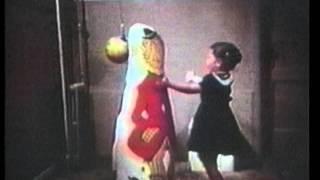

● “The risk of developing any mental health condition is inextricably linked to our life circumstances” (p. 58)
● “Socioeconomic disadvantage is a fundamental determinant of mental health outcomes over the life course” (p. 60)
● “Early life exposure to socioeconomic disadvantage may increase risk of mental health problems through several different mechanisms, based on potential biological, psychological and social pathways” (p. 61)


lack of attachment, belonging, identity, meaning, [and] purpose


“The barbarous and beastly maners of the wilde, godlesse,… especially is so vile and stinking a custome”

-King James I on tobacco (1604)
“Drugs are not entities with fixed meaning: our ideas about them are framed by the era we live in.”



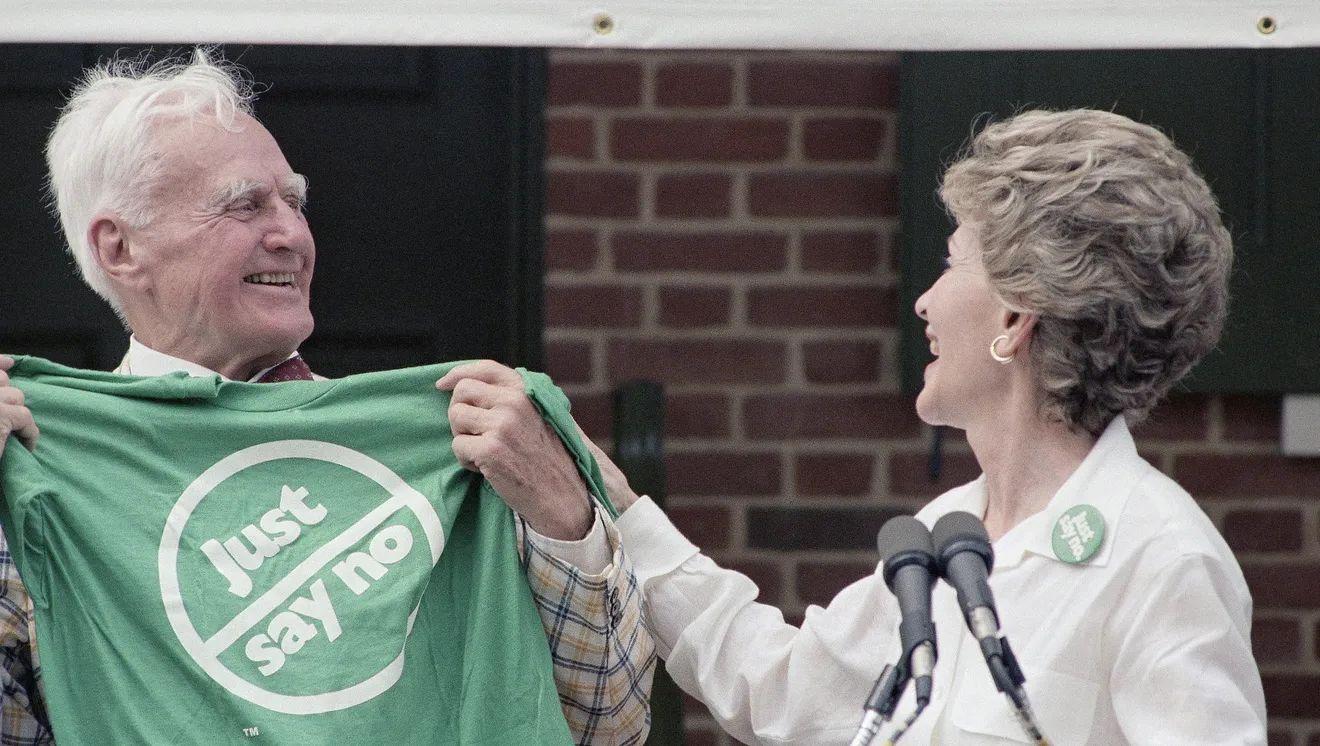

● “Firewater myths”
○ disguise the use of alcohol as a weapon and provide ideological support for colonization and supremacy
● “Cocaine Fiend”
● “Junkies”

“A strong habit of virtue, and a great degree of holiness, may cause a moral Inability to love wickedness in general, and may render a man unable to take complacence in wicked persons or things; or to choose a wicked in preference to a virtuous life.”
-Jonathan Edwards (1703-1758) , American Original.

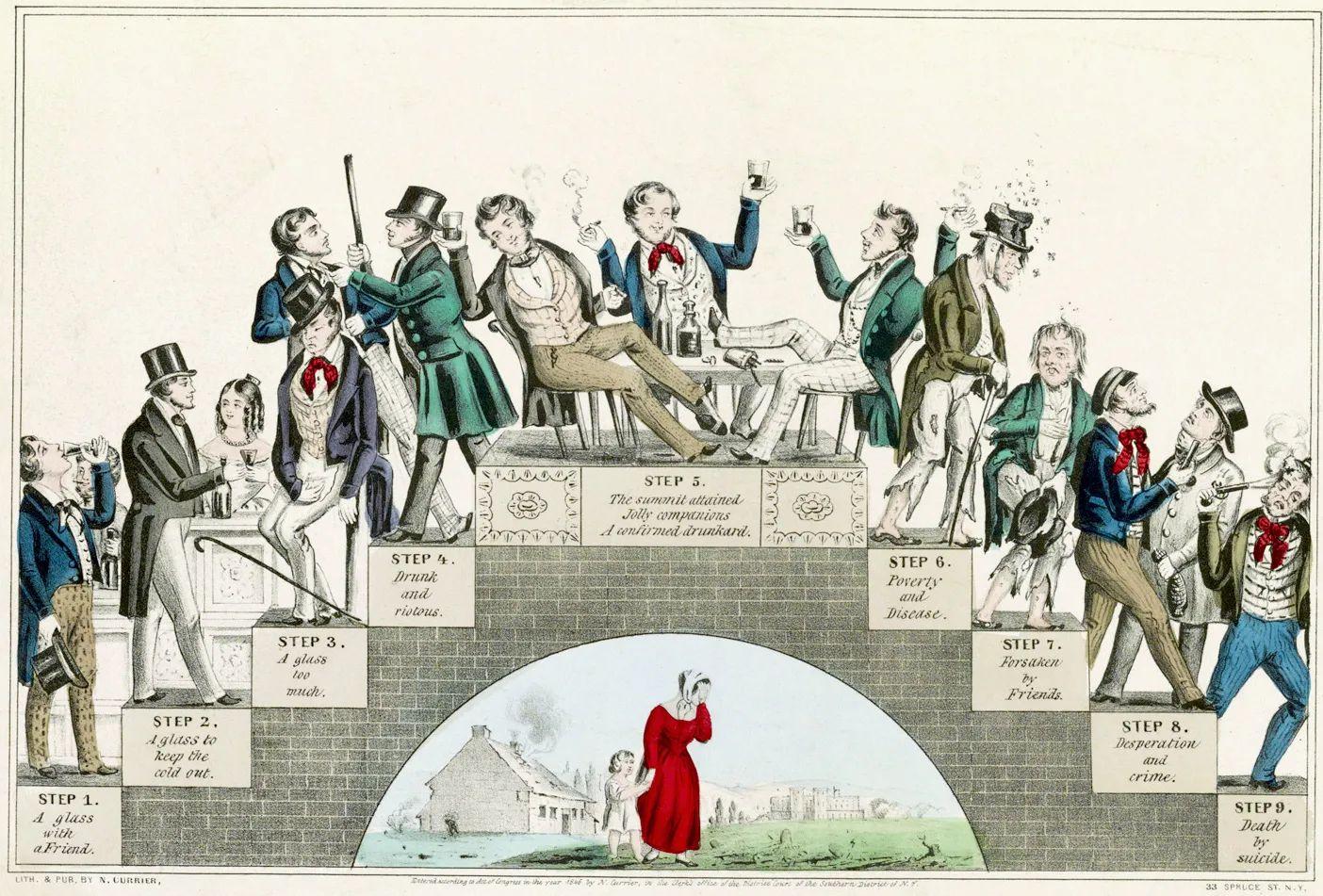

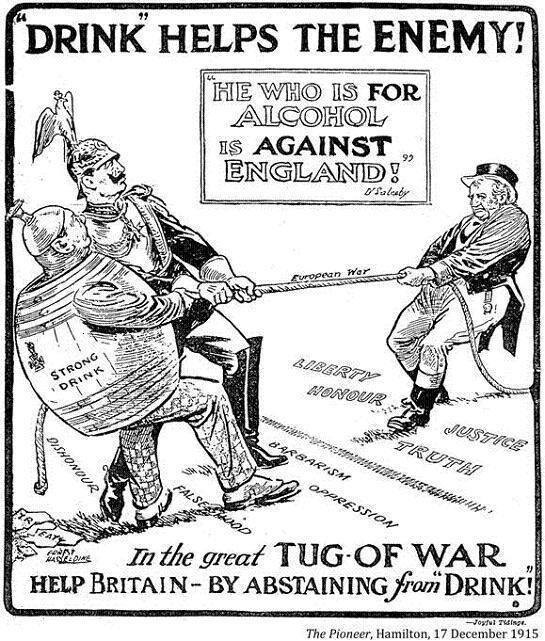

● Weiss (1942)
○ Abnormal drinking as a symptom of inadequate personality
● Gray and Moore (1942)
○ Foundation of personal inadequacy, social maladjustment and psychological disturbances
● Moore (1943)
○ More immature than average and may have “paranoid tendencies”

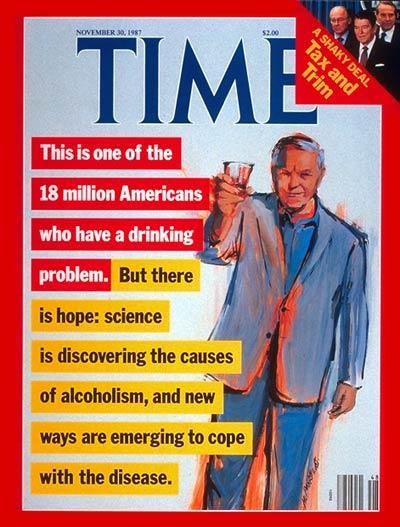

● Psychopharmaceuticals
○ Opioids- Methadone, Suboxone
○ Alcohol- Disulfiram, Naltrexone
● Rehabilitation ○ Hazelden, Minnesota

● Abstinence off all psychoactive substances
● “This model drew heavily on the experience of AA members in its conceptualisation of alcoholism as a primary, progressive, disorder whose management required sustained abstinence and an active, continuing, programme of recovery” (White, 2001, p50).
○ Five rules to prevent “self-will run riots”- behave responsibly, attend lectures on the Twelve Steps of Alcoholics Anonymous, talk with the other patients, make your bed, and stay sober.

“If you look at why addicts are soothing themselves through chemicals, you have to look at why they have discomfort and you will see that they have all experienced childhood adversity—the pain and distress that they needed to escape.”

-Gabor
Mate In the Realm of Hungry Ghosts
“A person is addicted to a specified behavior if they have demonstrated repeated and continuing failures to refrain from or radically reduce the behavior despite prior resolutions to do so or if they would have demonstrated such failures under different personal or environmental circumstances.”
- Nick Heater, 2017

“The material and emotional costs and benefits of everyday life, including existential and value laden self-reflections, are the correlates of remission from addictions.”

-Gene H. Heyman and Verna Mims
“Were a keg of rum in one corner of a room, and were a cannon constantly discharging balls between me and it, I could not refrain from passing before that cannon, in order to get at the rum.”

- Rush 1812 quoting a user of alcohol
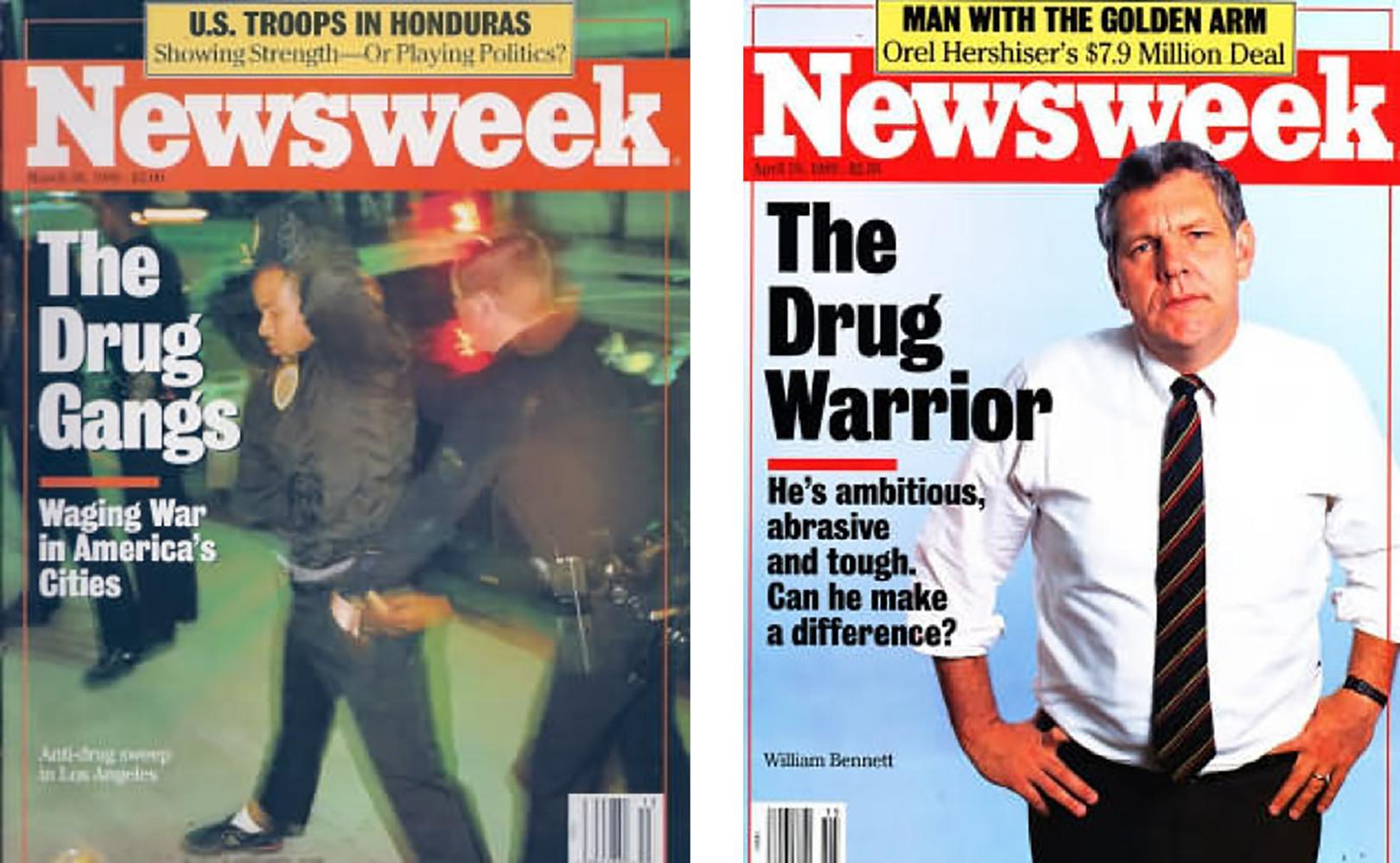


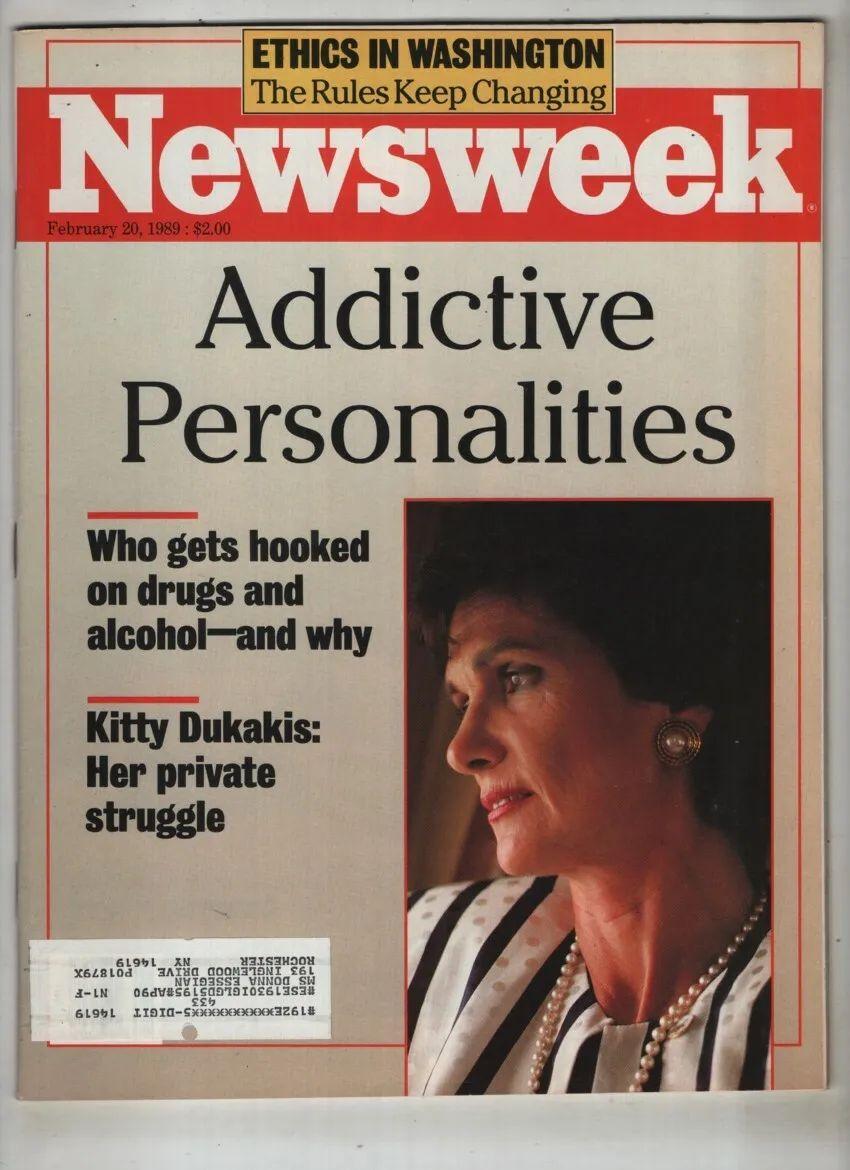
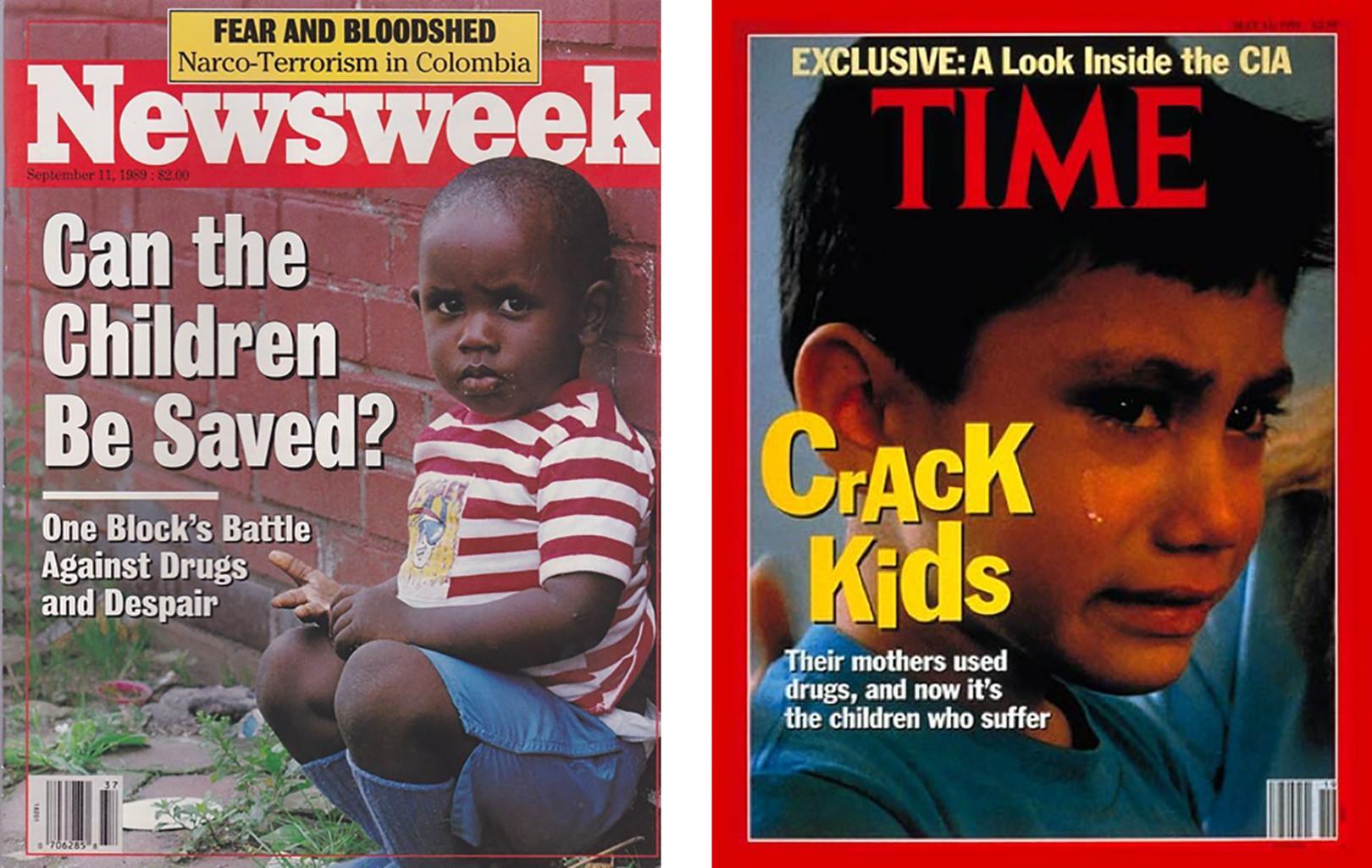

● Opium Act 1908
● Opium and Narcotics Drug Act 1920
● Narcotics Control Act 1961
● National Drug Strategy 1987
● Controlled Drug and Substance Act 1997
● National Anti-Drug Strategy 2006

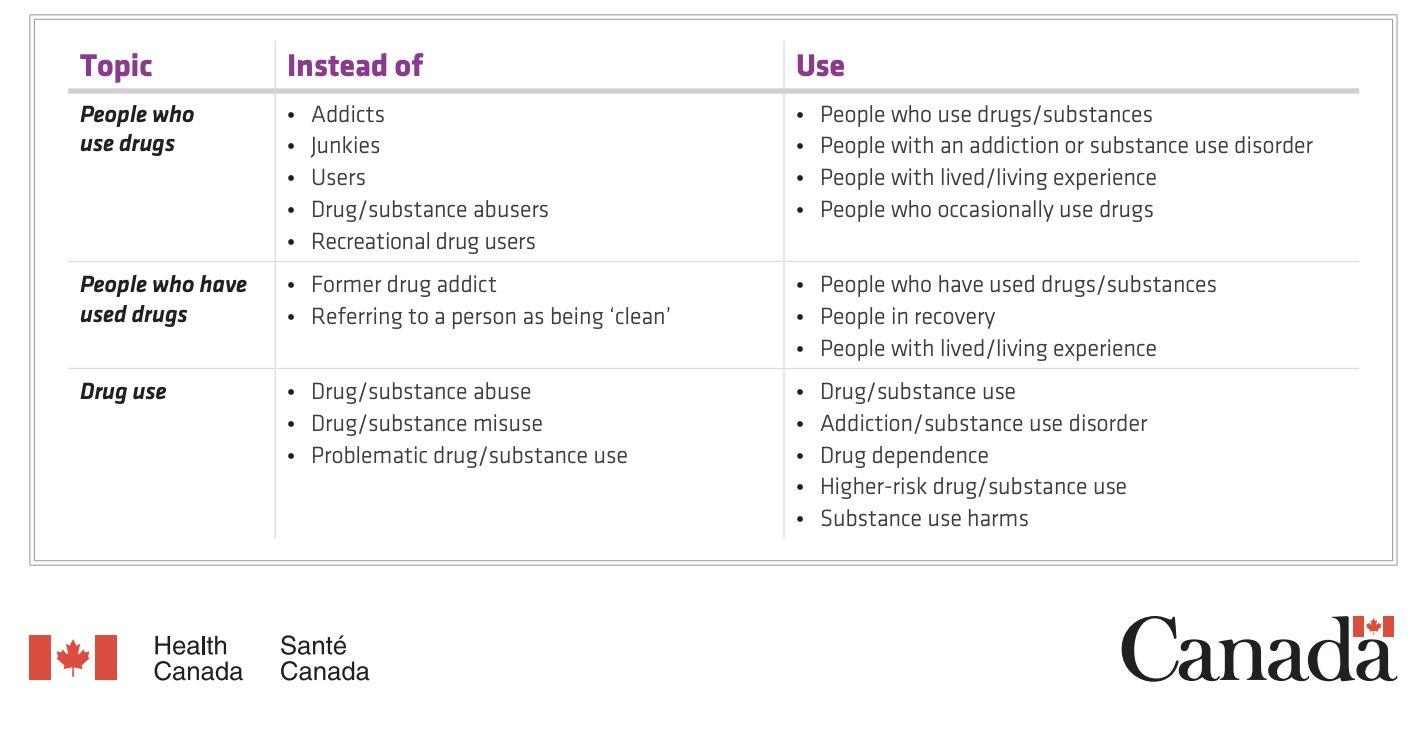


● Early childhood experiences and insecure attachments – Interrelated risk factors for addictions
● Bowlby’s internal working model
● Self- Medication theory of addictions
● “Significant positive association between insecure attachment (anxious and avoidant) and a more intensive and dysfunctional use of the internet and social media”

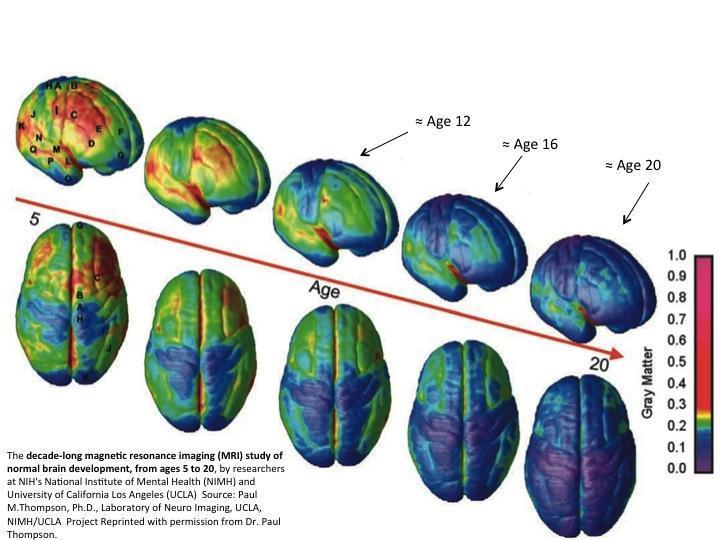

● Developed in early childhood
● Influences a child’s capacity to form mature intimate relationships in adulthood
● Influence cognitive schemas
“Patterning and organization of attachment relationships during infancy is associated with characteristic processes of emotional regulation, social relatedness, access to autobiographical memory, and the development of self—reflection and narrative”
(Siegel, 1999, p.67)

Secure Attachment
Have adaptive emotional regulation abilities through sustained problem-solving efforts
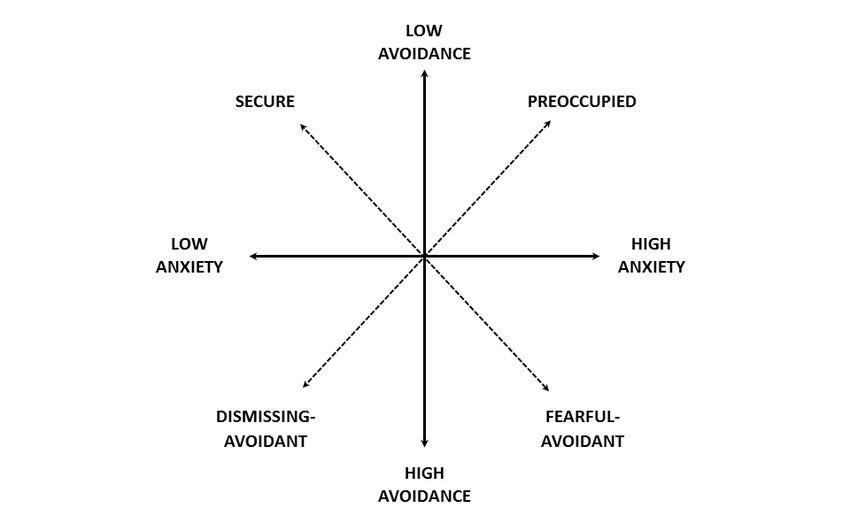
Avoidant Attachment
• Suppress or deactivate emotional reactions
• Fearful of vulnerability and emotions

Anxious Attachment
• Crave close relationships
• Engage in strategies that sustain or even exacerbate their distress





● Addiction develops from chronic intermittent exposure
● Progressive and functional disruptions to brain regions that underlie motivation, reward, and inhibitory control
● Includes a transition from impulsive drug intake to compulsive intake
● Mediated by positive and negative reinforcement
● Inhibitory control diminished due to impairment in executive functioning from substance use

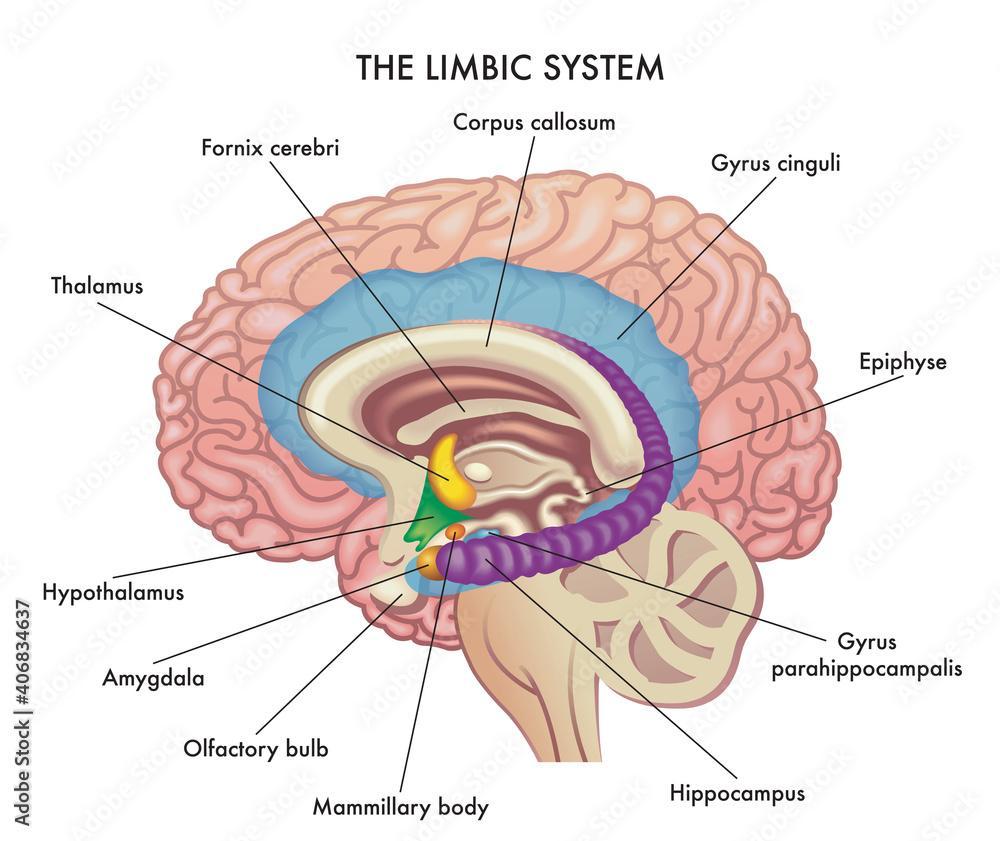

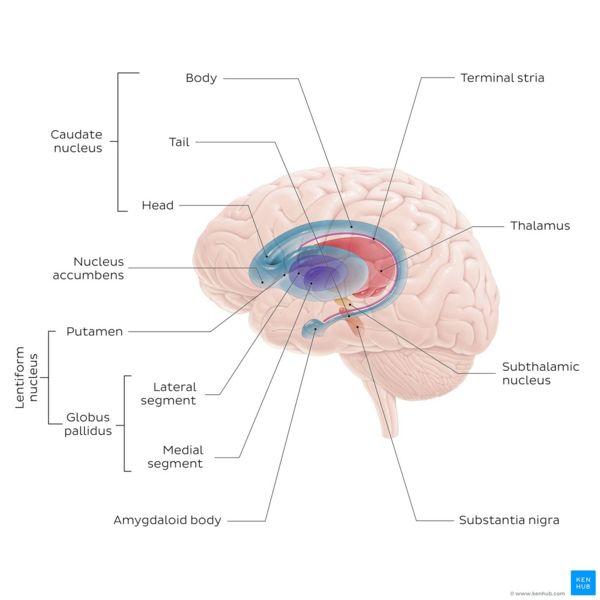



● Increase extracellular dopamine concentrations in limbic region
● Stimulants directly increase dopamine in synaptic space
● Other substances work directly or indirectly to modulate dopamine cell firing
● Increases motivation to seek substance

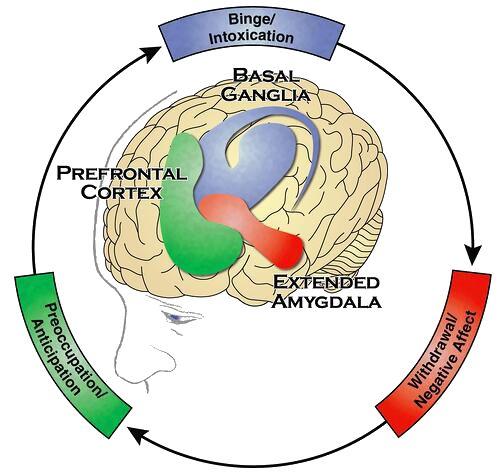
Credit: National Institute of Health


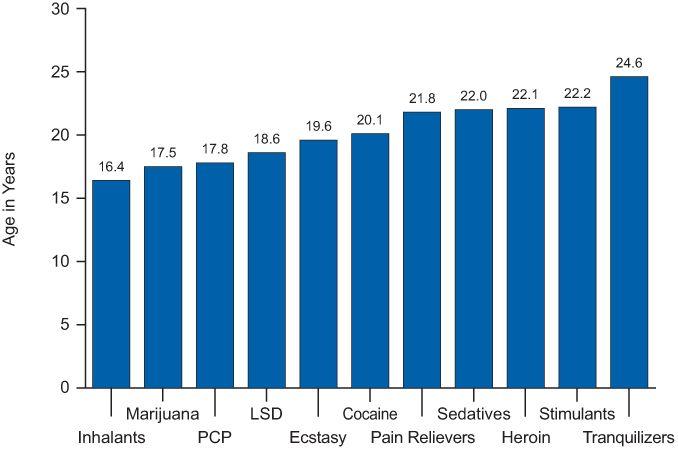

Average age of first use
● Central nervous system depressant
○ Initial: Relief of anxiety, increased talkativeness, feelings of confidence and euphoria, and enhanced assertiveness
● Medical complications
○ Skeletal fragility and damage to tissue such as brain, liver, and heart

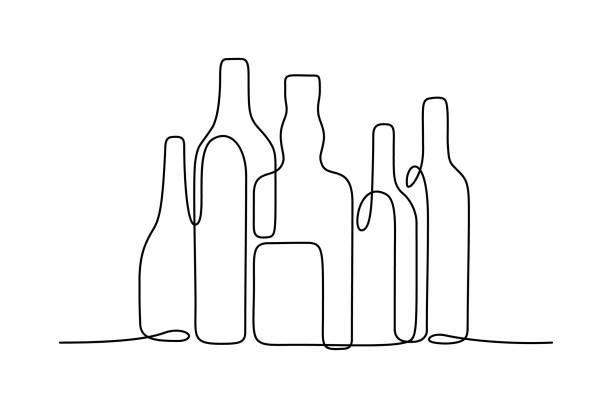
● Alcohol is a neurotoxin
● Associated with atrophy of the cerebral cortex, reduced white matter volume, enlarged ventricles, and atrophy of subcortical structures
● Cognitive deficiencies with both white and grey matter abnormalities
● Frontal lobes, limbic system, and cerebellum particularly vulnerable to chronic alcohol abuse
● Alcoholic dementia
● Korsakoff’s syndrome

● Acute effects: hallucinatory and reactive emotional states, some pleasant, some unpleasant and even terrifying; time disorientation; and recenttransient- memory loss
● Likely no permanent neurotoxic effects
● Impact on neurodevelopment: changes in adult brain circuits after heavy cannabis consumption during adolescence, leading to impaired emotional and cognitive performance and potentially representing a risk factor for developing schizophrenia

● Disrupts the functional integrity of the brain’s reward centres
● Abnormal metabolism and hypoperfusion even after sustained abstinenceslowed mental processing, memory impairments, reduced mental flexibility

Long-term uses can sustain permanent cognitive impairments- attention, concentration, various aspects of memory and learning, and visuospatial and visuomotor activities

● Paranoid psychotic episodes with vivid hallucinations, both auditory and visual, and vulnerability to psychotic relapses
● Damage to dopaminergic and serotonergic terminals
● Cognitive impairments- attention, memory, executive functions



● While other factors do contribute to the manifestation of particular traits, the foundation in the DNA must be present for that trait to be exhibited [16]
● Epigenetics is the study of how your behaviors and environment can cause changes that affect the way your genes work. Unlike genetic changes, epigenetic changes are reversible and do not change your DNA sequence, but they can change how your body reads a DNA sequence.

“Anything which causes an alteration of psychological homeostatic processes”



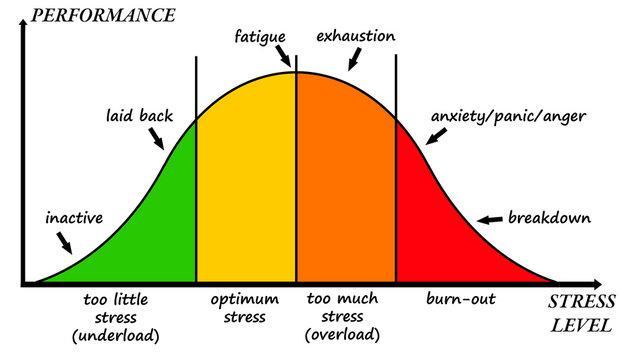



● “Currently, the growing number of data indicate probiotics as the form of treatment of mental disorders/neurological and developmental disorders in which increased intestinal permeability has been demonstrated, i.e., depression, anxiety, autism, schizophrenia, or bipolar disorder [50]. The mode of action of probiotic microorganisms includes, among others, regulation of the immune system, production of SCAFs, or support of the gut barrier integrity” [17]
● Probiotics found to have small but significant impact on decreasing symptoms of depression and anxiety [18]
● Stress has been shown to cause a radical decrease in the number of Lactobacillus spp. and Bifidobacterium spp [17]





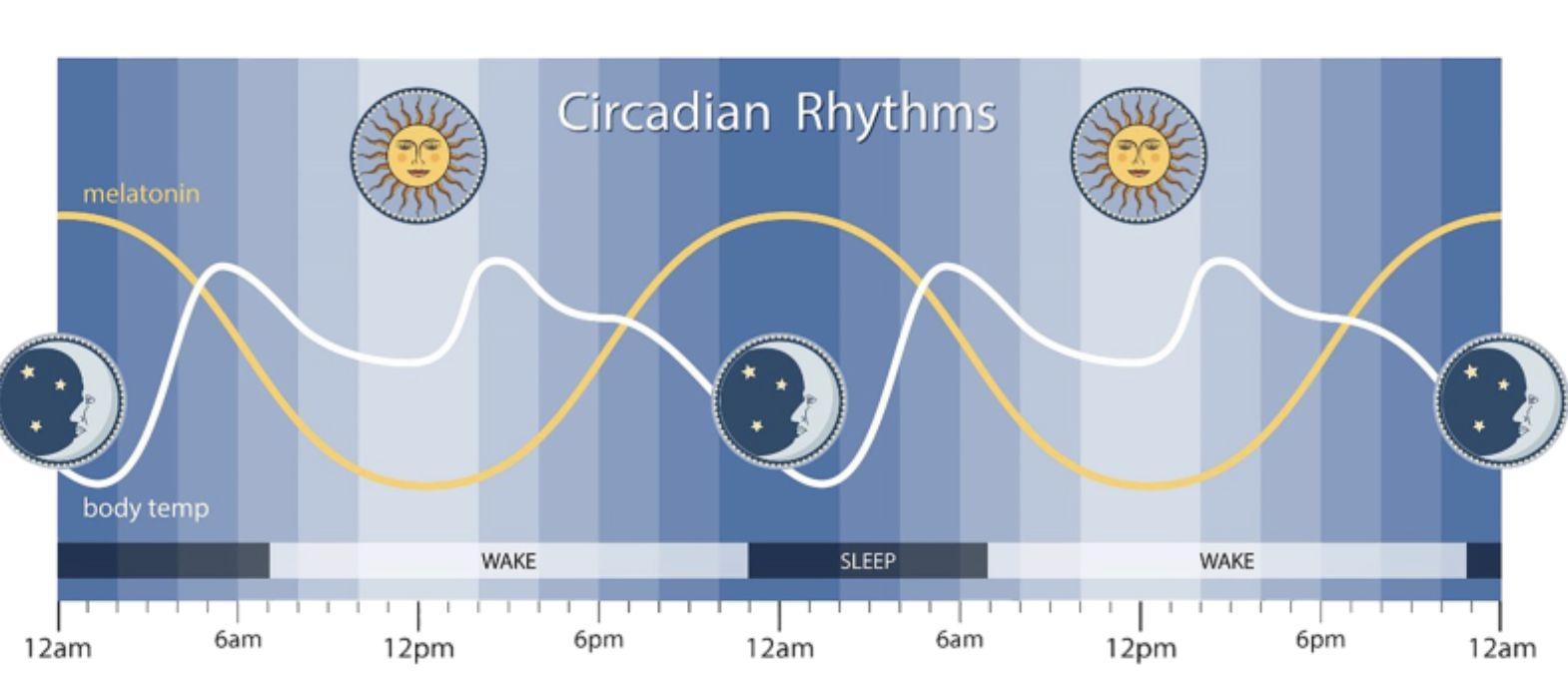

https://www.ninds.nih.gov/health-information/public-education/brain-basics/brain-basic s-understanding-sleep

“Behavioral
economic theory predicts that the primary contextual influences on drug use are both constraints on access to drugs and the availability and value of alternative substance-free sources of reinforcement”
- Correia et al., 2010



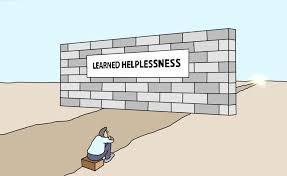
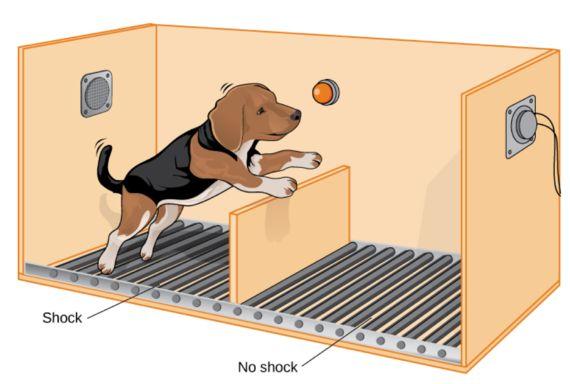

● ACEs are common across all populations
● Some populations are more vulnerable to experiencing ACEs
● Graded dose-response relationship between ACEs and negative health and well-being outcomes
● As the number of ACEs increases so does the risk for negative outcomes

Source: Centers for Disease Control and Prevention, Kaiser Permanente.TheACE Study Survey Data [Unpublished Data].Atlanta, Georgia: U.S. Department of Health and Human Services, Centers for Disease Control and Prevention; 2016.
● “The findings suggest that the impact of these adverse childhood experiences on adult health status is strong and cumulative” p.251
● “However, the analysis we present illustrates the need for an overview of the net effects of a group of complex interactions on a wide range of health risk behaviors and diseases.” p. 251
● “An essential question posed by our observations is, ‘Exactly how are adverse childhood experiences linked to health risk behaviors and adult diseases?’” p.252

● “The linking mechanisms appear to center on behaviors such as smoking, alcohol or drug abuse, overeating, or sexual behaviors that may be consciously or unconsciously used because they have immediate pharmacological or psychological benefit as coping devices in the face of the stress of abuse, domestic violence, or other forms of family and household dysfunction.” [1] p. 253
● “High levels of exposure to adverse childhood experiences would expectedly produce anxiety, anger, and depression in children. To the degree that behaviors such as smoking, alcohol, or drug use are found to be effective as coping devices, they would tend to be used chronically.” [1] p. 253
● “Understanding the causal mechanisms through which any prenatal exposure may affect offspring mental health remains a critical objective for psychiatric epidemiology” [2] p.61

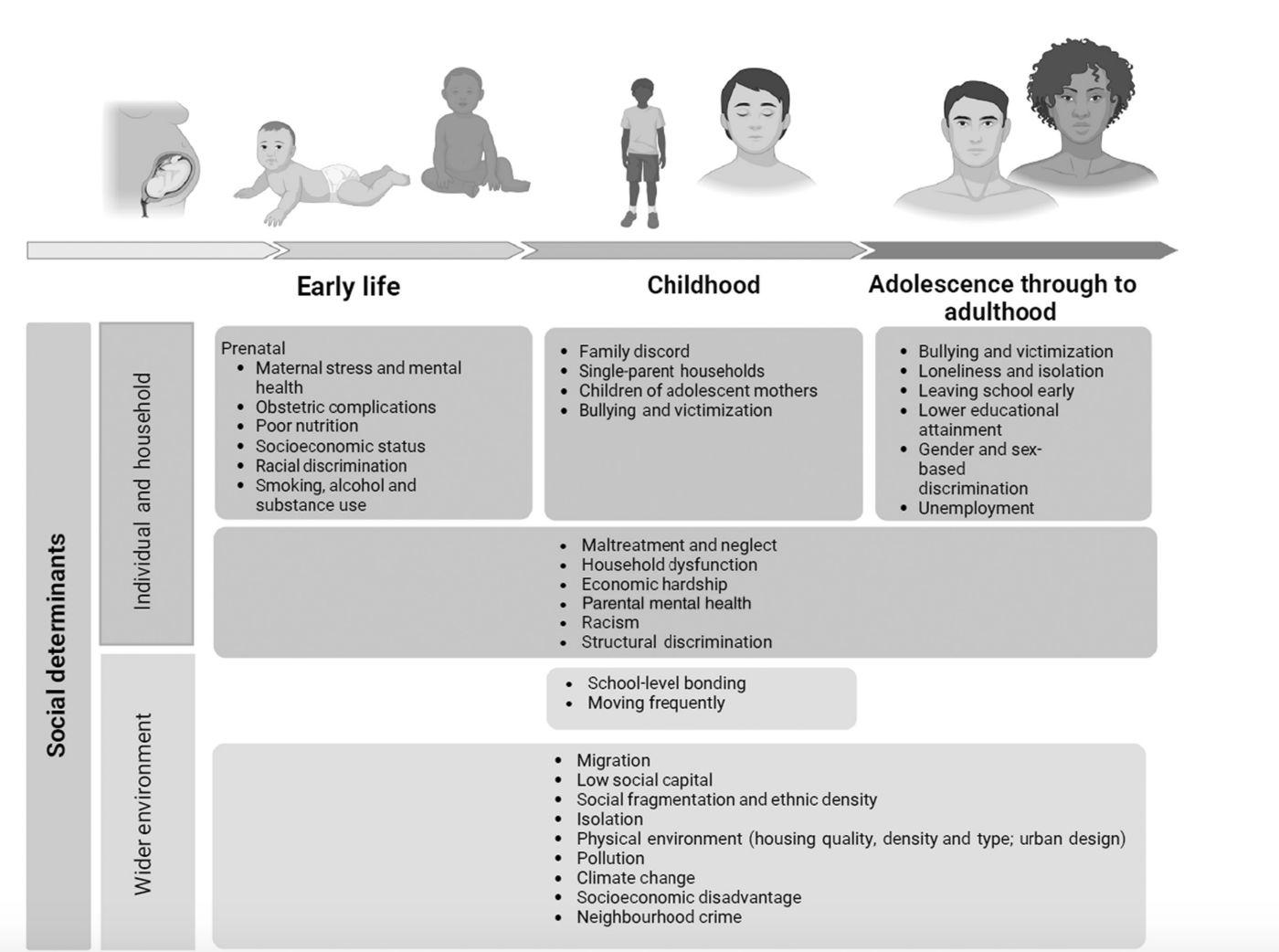

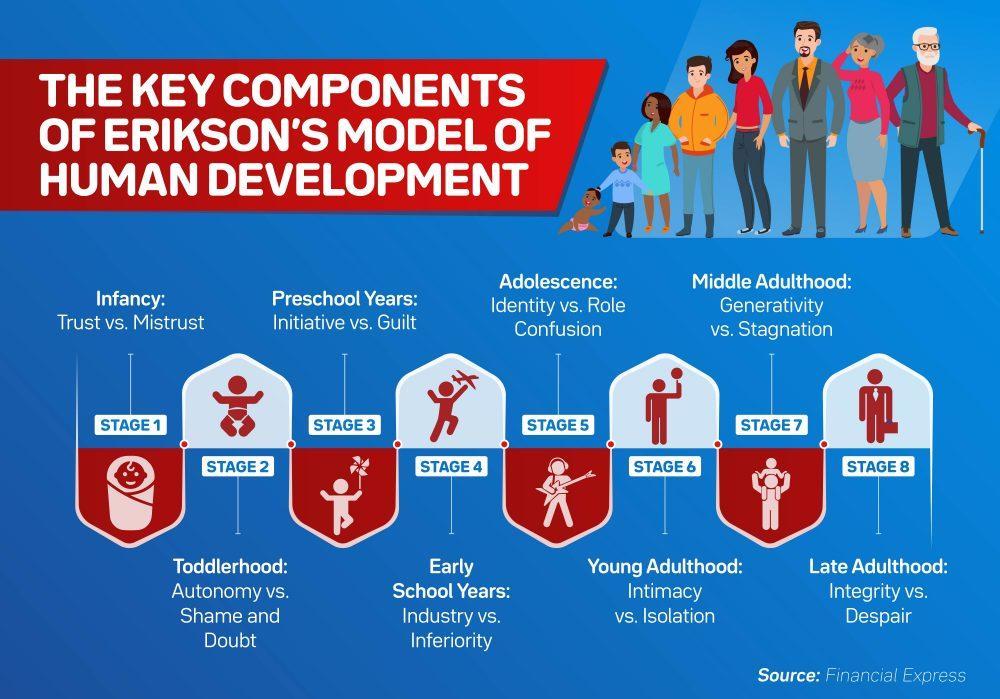

● Patterns of thinking and behavior that are used to interpret
● Maximum neurons at 3 years old
● Pruning for efficiency
● Chronic stress causes excess pruning
● Self-protection and survival
● Narrative therapy and challenging schemas



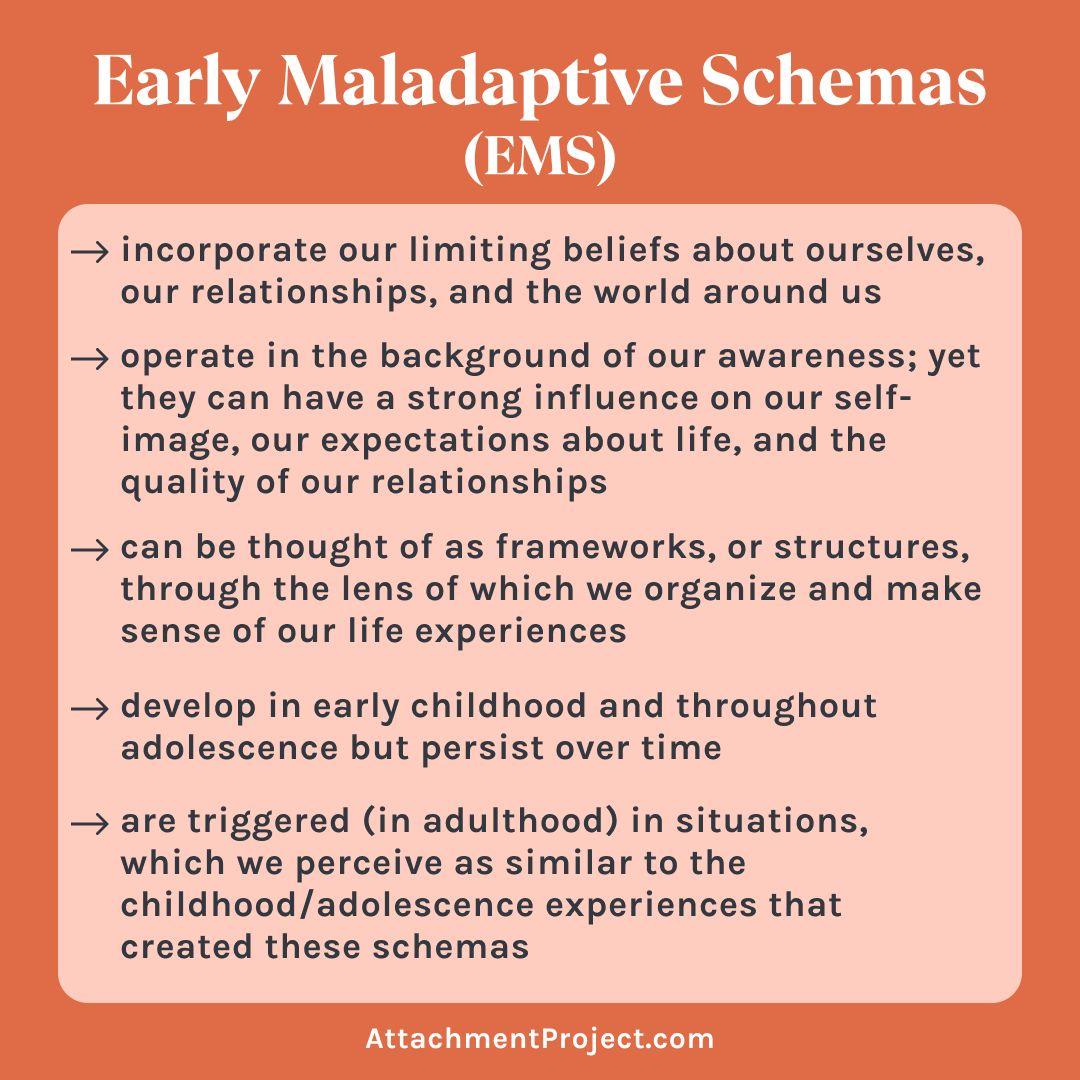

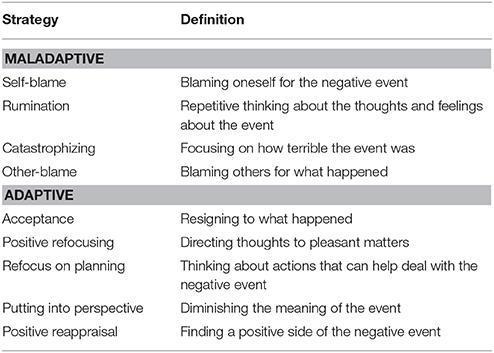

Garnefski, N., Legerstee, J., Kraaij, V., van den Kommer, T., and Teerds, J. (2002b). Cognitive coping strategies and symptoms of depression and anxiety: a comparison between adolescents and adults. J. Adolesc. 25, 603–611. doi: 10.1006/jado.2002.0507
● Repressed trauma memories - mixed to limited evidence
○ 24.1% of Clinical Psychologists [in USA] agree in repressed memories and 8.6% of Cognitive Psychologists [23]
● Children coping through dissociative avoidance coding style - mixed to limited evidence
● Fragmented memories – scarce peer reviewed evidence of fragmented or dissociated memories [19,20,22]


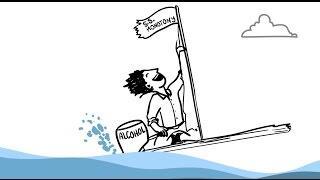

● Acceptance of suffering
● Self-awareness
● Relationships
● Intrinsic goals


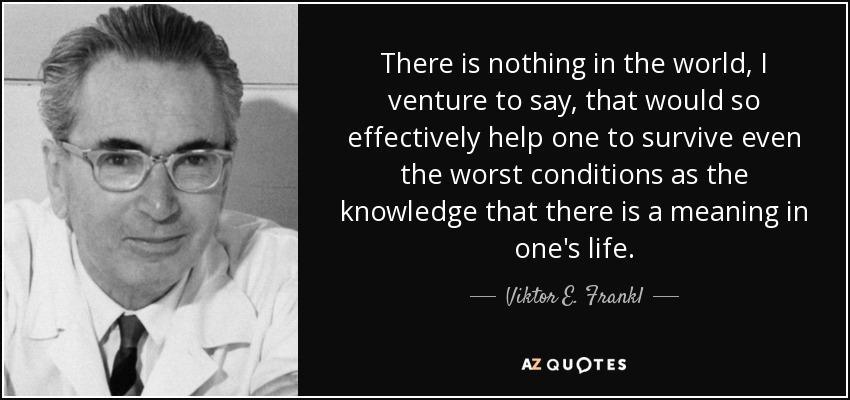

One is to survive; one is to exist. The former only asks to go on living; the latter asks for meaning. The former concerns itself with how to live, the latter with why to live, the meaning of living.
- Xuefu Wang, 2019, The Symbol of the Iron House: From Survivalism to Existentialism. In Existential Psychology East-West (Vol. 2), p. 7.

“Personal meaning is defined as feelings of satisfaction and fulfillment that flow from the pursuit of worthwhile activities and life goals”

- Dr. Paul Wong

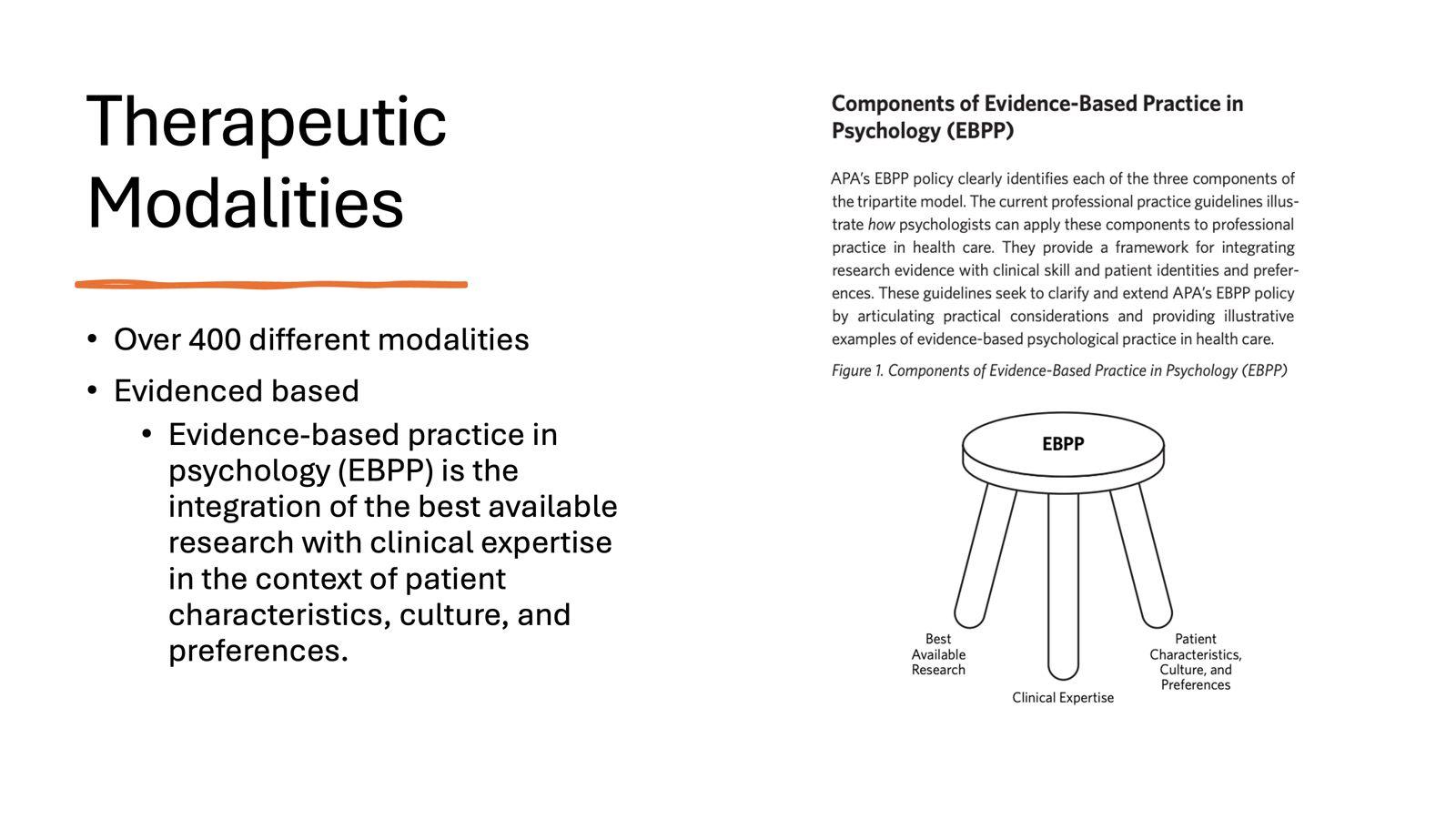



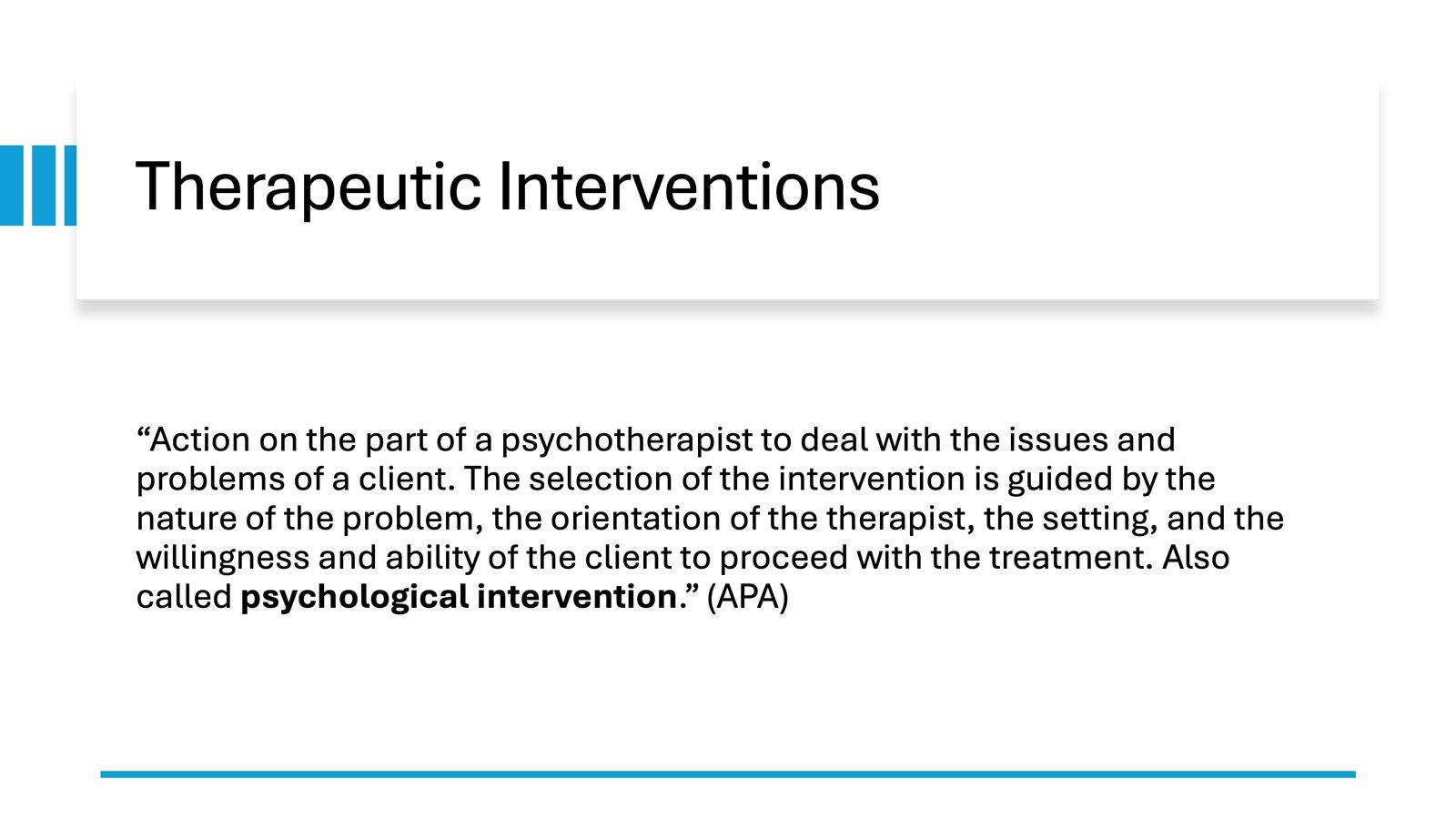

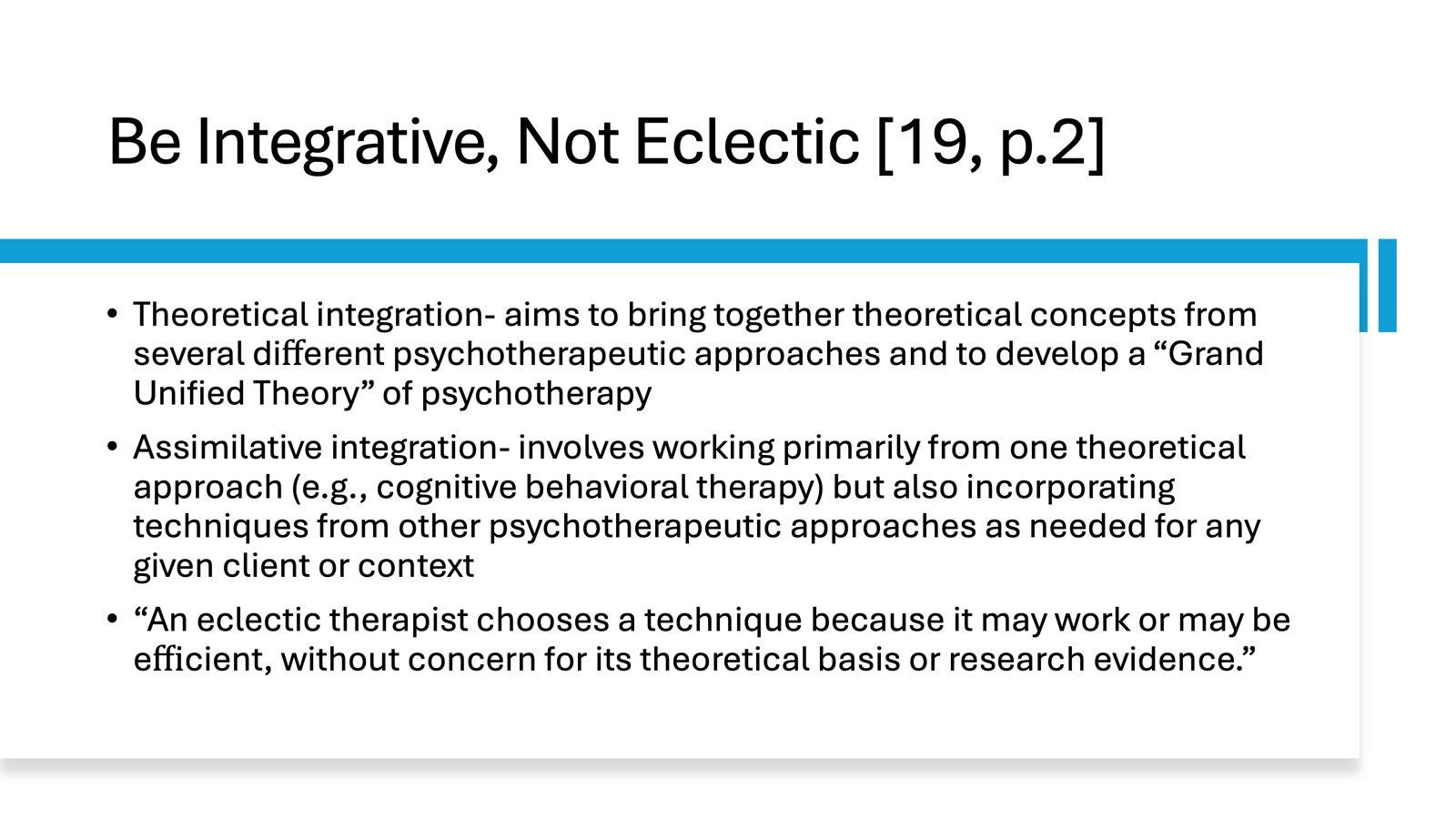



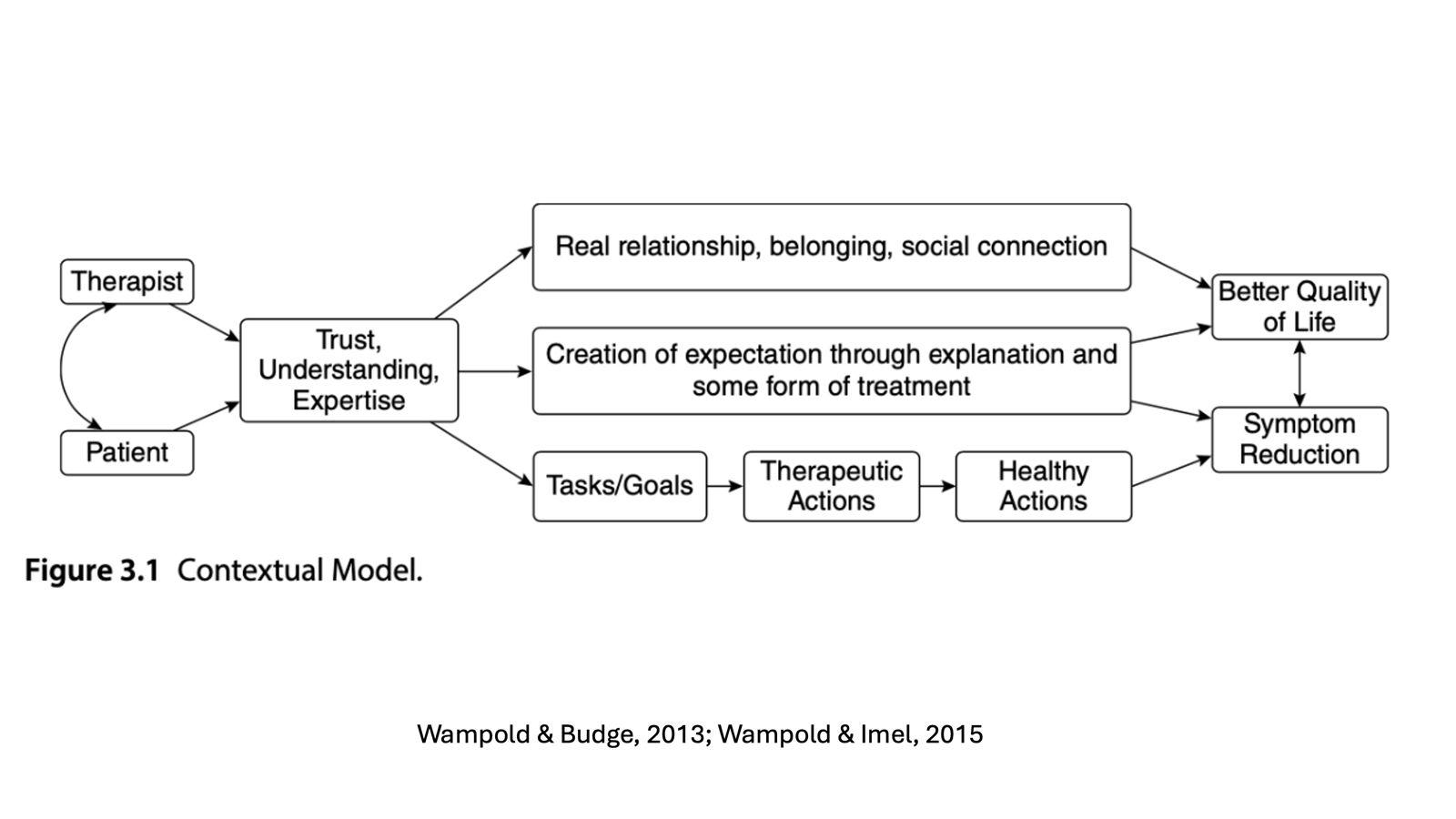


1983



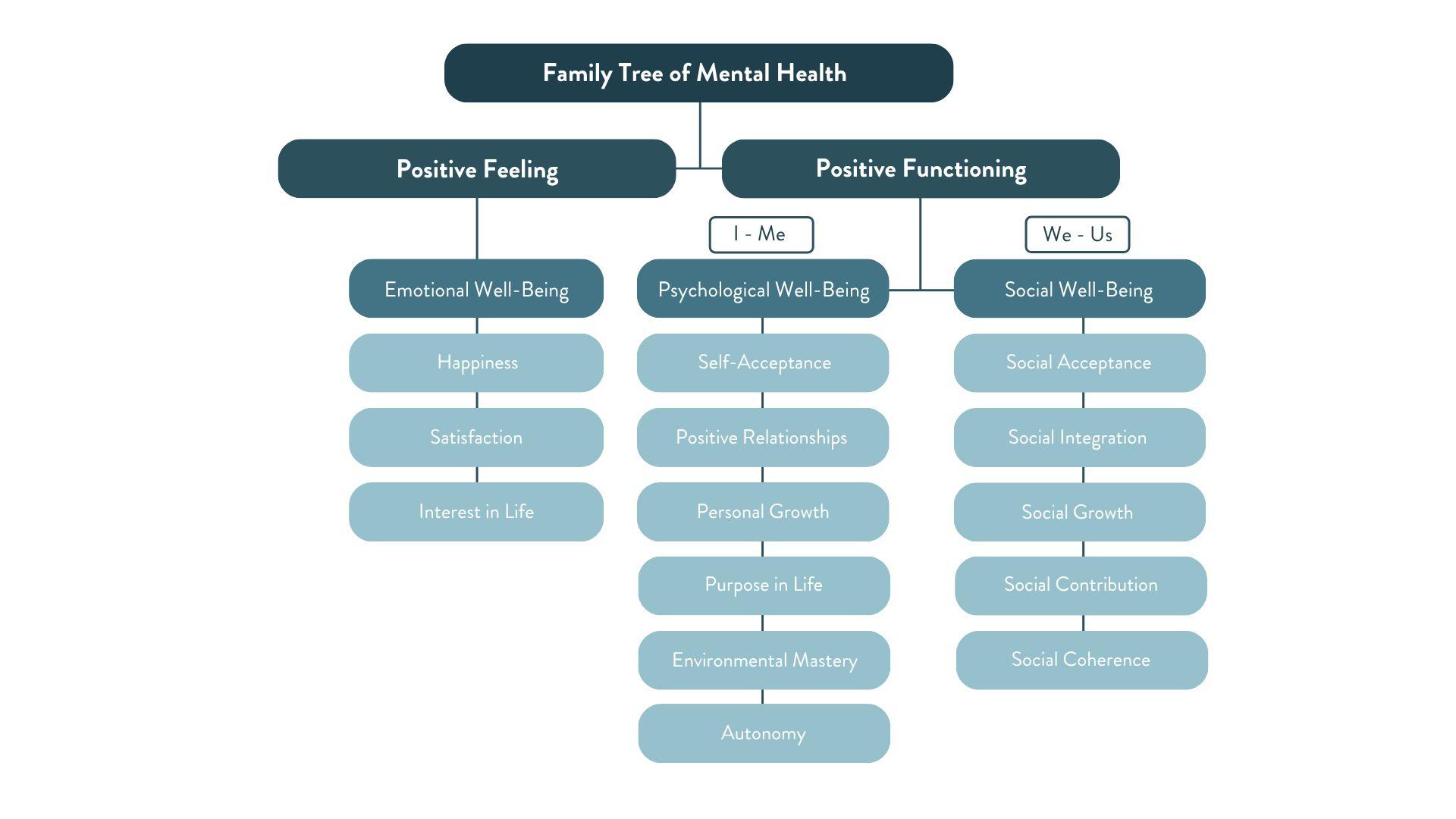

Follow Your Curiousity to Learn Something New
For bolstering your sense of competence and rewriting your self-narrative through personal growth
Move Closer to the Sacred, the Divine, and the Infinite (through Contemplation, Meditation, or other Spiritual Practices)
For awareness of your union with all living things, unconditional acceptance and generosity towards yourself and others, and appreciation of the mysteries of life.

Build Warm and Trusting Relationships
For a deeper sense of belonging, intimacy, and being “truly known” - and remember quality matters more than quantity
Play (Make Time for Activities Where You Enjoy the Process, not the Outcome)
For re-discovering joy, re-connecting with your imagination, practicing active leisure, and breaking away from achievement obsession
Have and Live Your Purpose
For finding personal significance in the mundane, calm in the face of setbacks, and a profound sense of “mattering” to your community and world

● Create emotionally safe environments
● Non-judgmental approach
● Teach skills
Self-talk, taking a break, catharsis, breathing
● Normalize


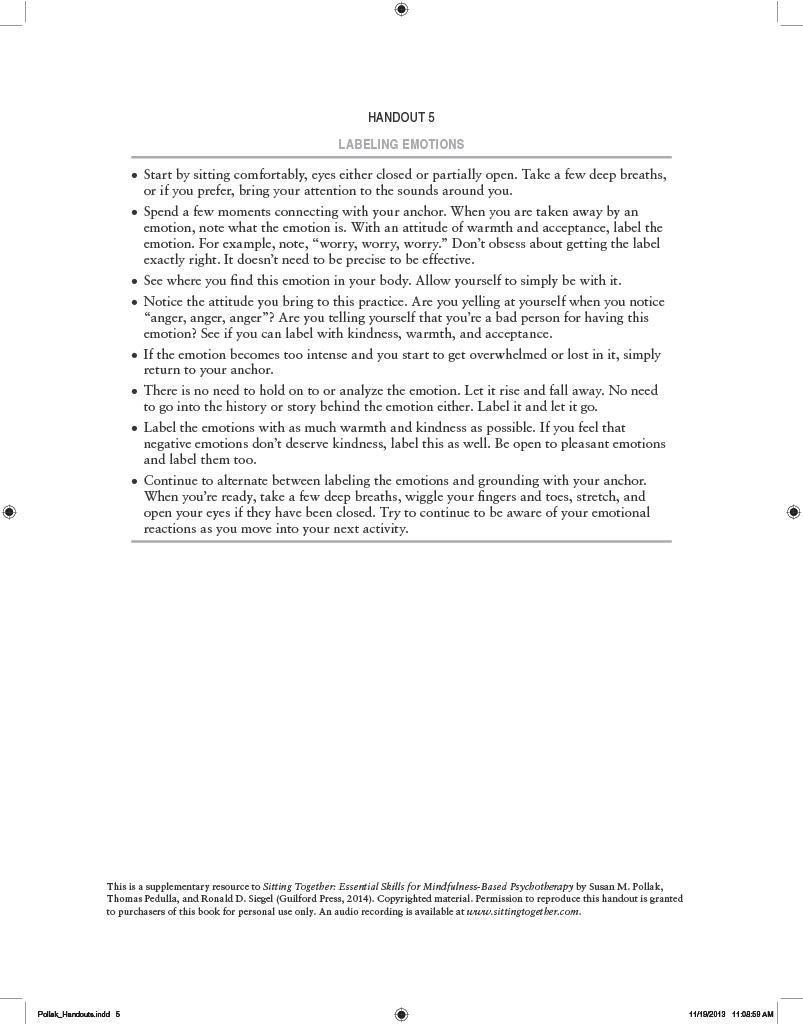
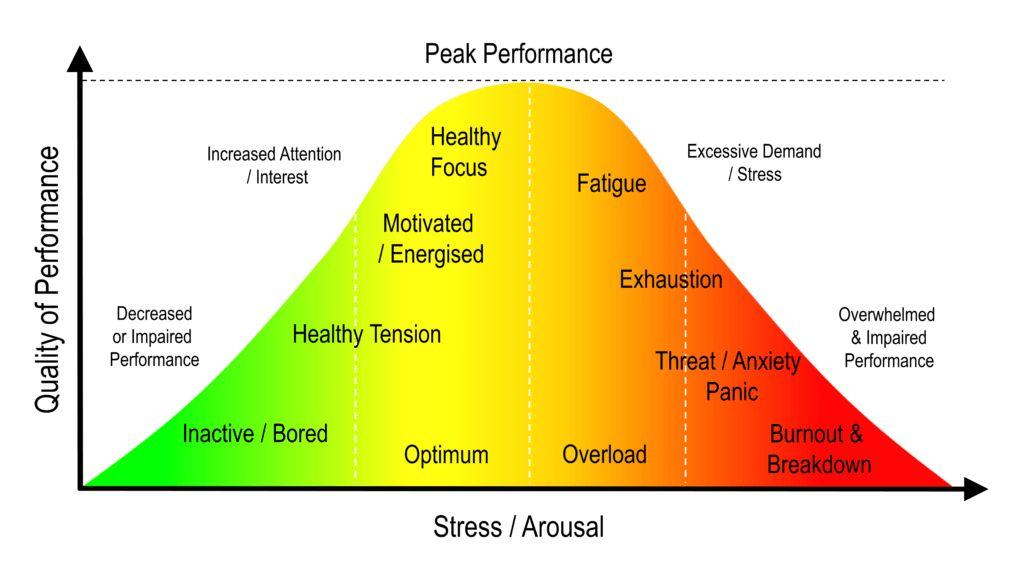

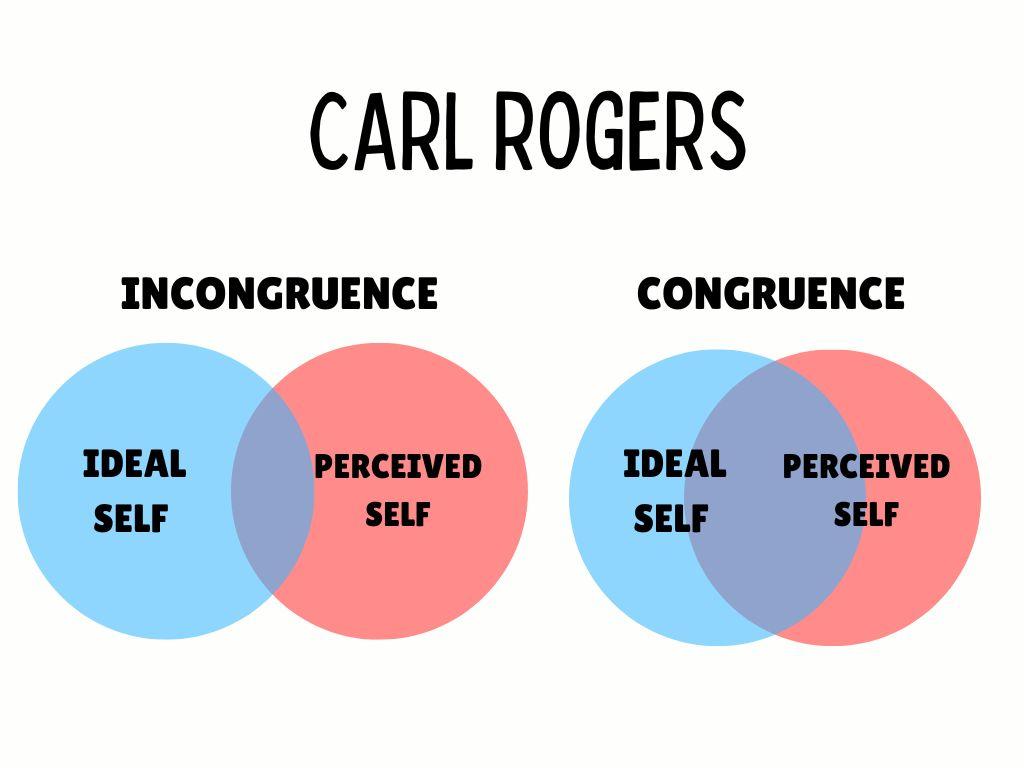

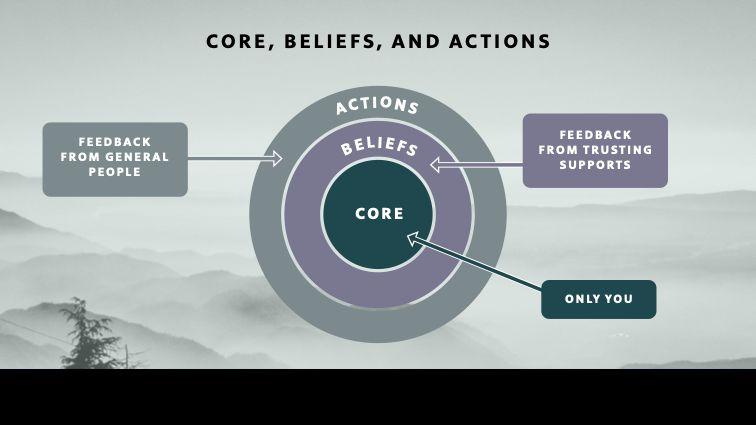

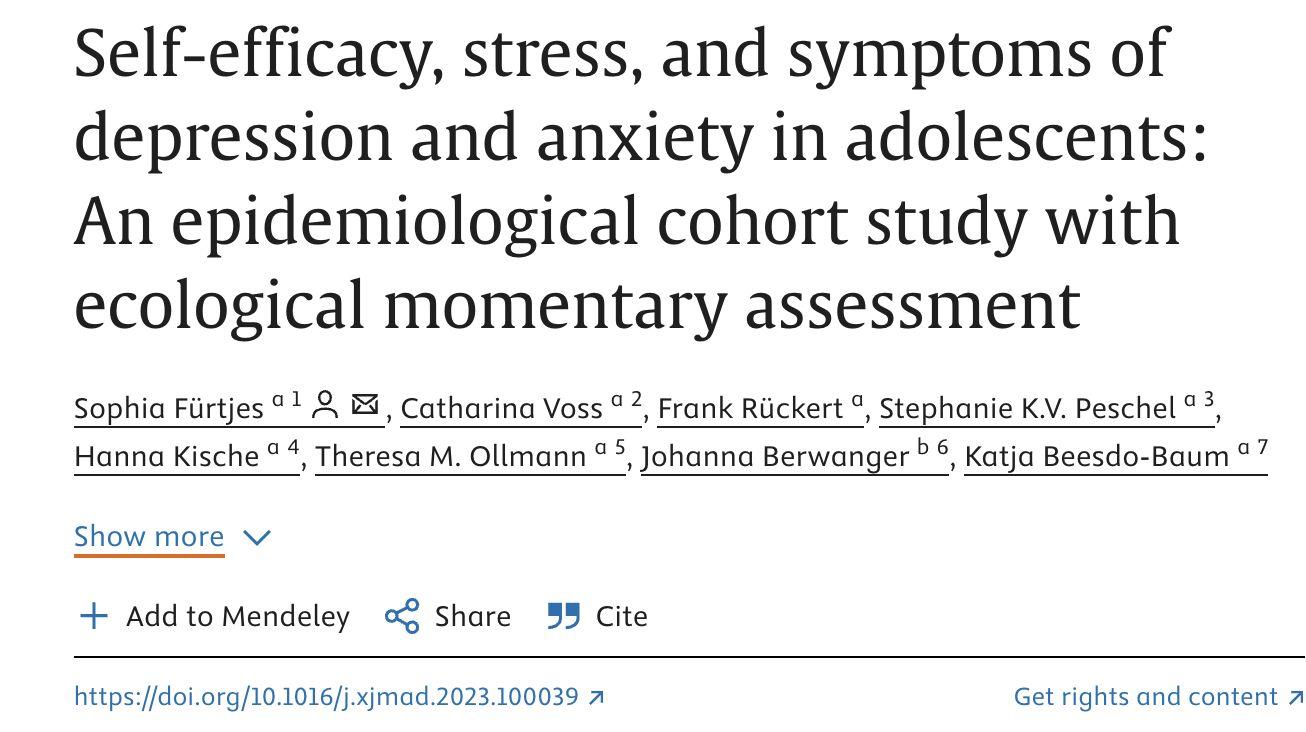
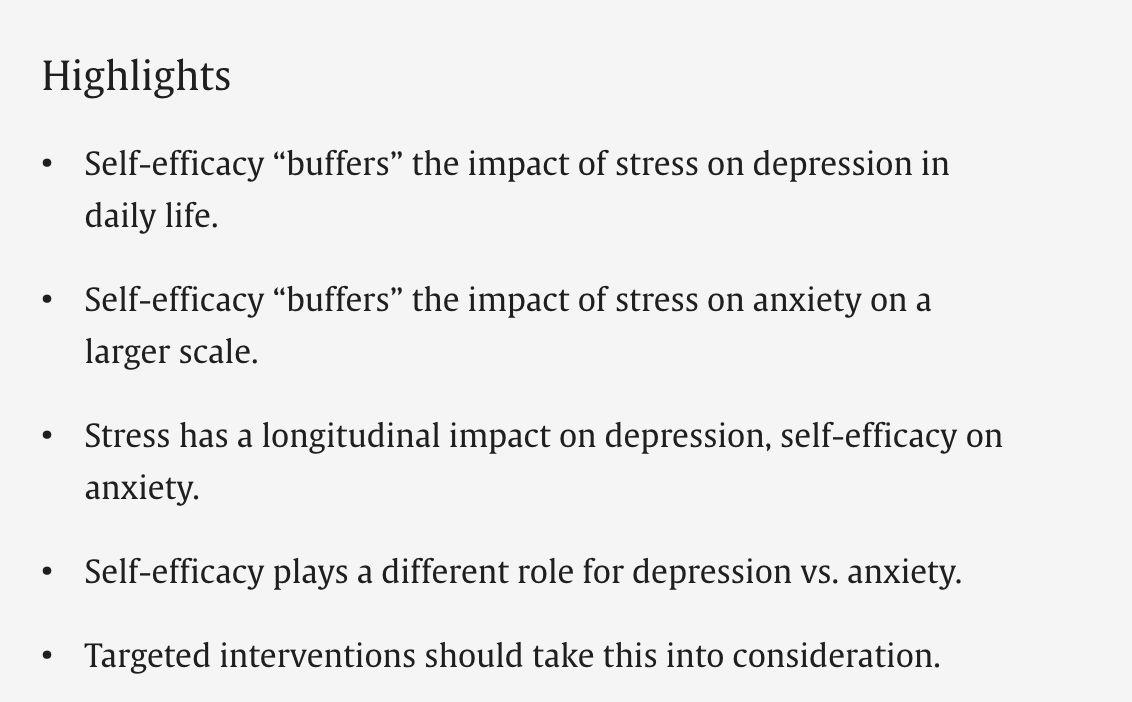

Craving/Emotional Response
Resumed Use (aka Relapse)

Thought Control


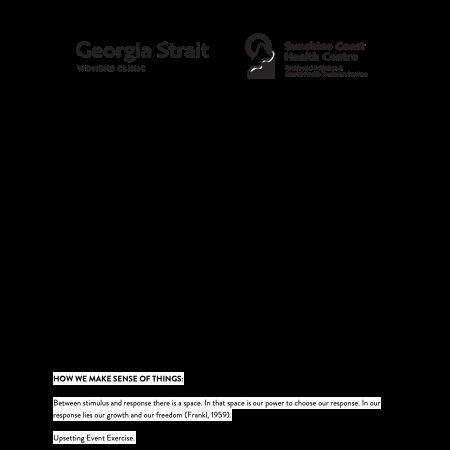



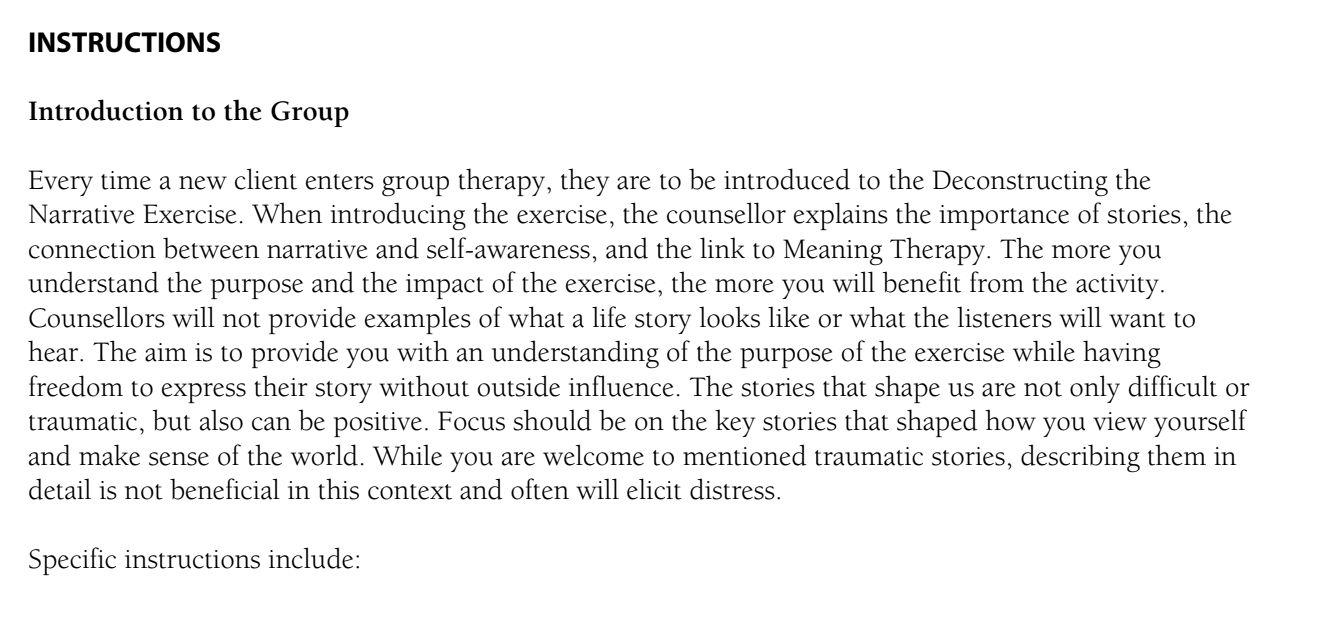




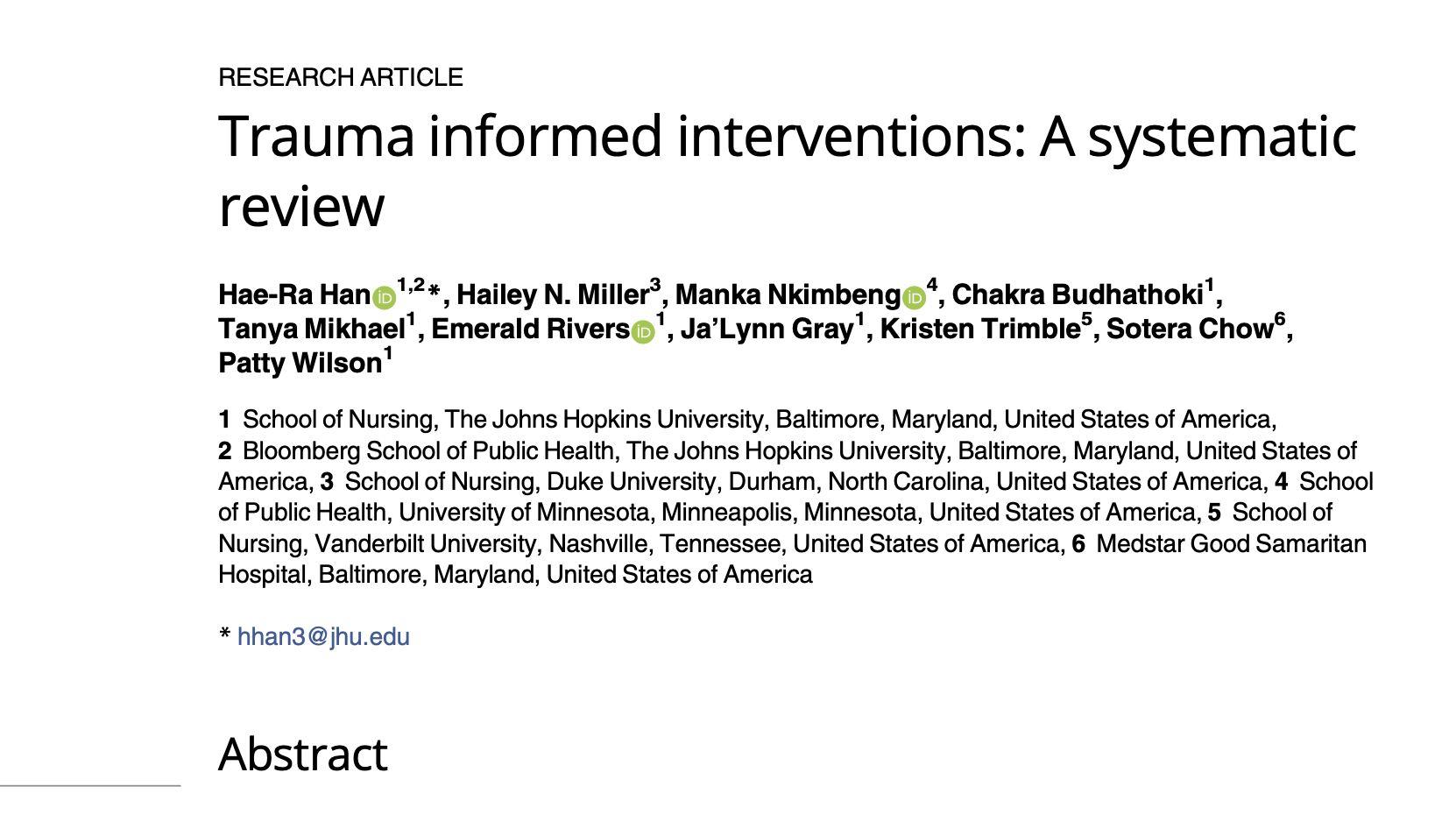
There is inconsistent evidence to support trauma informed interventions as an effective approach for psychological outcomes. Future trauma informed intervention should be expanded in scope to address a wide range of trauma types such as racism and discrimination. Additionally, a wider range of trauma outcomes should be studied.

● Resilience – 65.7%
● Recovery – 20.8%
● Chronic - 10.6%
● Delayed onset- 8.9%
● Among patients assessed in clinical settings, 18-50% experienced recovery within 3-7 years, while the remainder had a recurrent or more chronic course [5]
● Most RCTs to date have excluded people with more complex presentations of PTSD and, given their prevalence and the morbidity associated with such presentations, a research focus on them is required. [4]



Chapman, C., Mills, K., Slade, T., McFarlane, A. C., Bryant, R. A., Creamer, M., & Teesson, M. (2012). Remission from post-traumatic stress disorder in the general population. PsychologicalMedicine, 42(8), 1695–1703. doi:10.1017/S0033291711002856

1. Survival curve indicating years after onset until remission from post-traumatic stress disorder (PTSD) in the population.

Chapman, C., Mills, K., Slade, T., McFarlane, A. C., Bryant, R. A., Creamer, M., & Teesson, M. (2012). Remission from post-traumatic stress disorder in the general population. PsychologicalMedicine, 42(8), 1695–1703. doi:10.1017/S0033291711002856


Berman J, Ambrose AJ. Prioritizing patient preferences: a practical guide for tailoring treatment choices in interventional psychiatry. JClinPsychiatry. 2022;83(3):22ac14436.
“The capacity of a dynamic system to adapt successfully through multisystem processes to challenges that threaten the function, survival, or development of the system.” [7, P.524]
● Resilience research began in the 1970s in the same context that gave rise to developmental psychopathology [7]
● Looked at positive and negative pathways leading from psychopathology
● Considers the system and development of the individual
● “Study of individuals ‘off the risk gradient’ who manifest positive adjustment and development despite risk or adversity exposures [7,p.526]
● In addressing how trauma “gets into the brain and body” - Positive experiences have also been found to influence the biology and development of adaptation at multiple neurobiological levels [7]

● Face fear
● Realistic optimism and positive emotions
● Social support
● Active and flexible coping
● Acceptance and positive reappraisal
● Religious and spiritual practices
● Meaning and purpose

● Debated as to the merit
○ Phase-based treatment recommended for Complex PTSD by the International Society for Traumatic Stress Studies (ISTSS)
● Phase 1 - Safety and Stabilization [14]
○ Not needed for every client (don’t encourage avoidance)
○ Focused on creating coping skills
○ Emotional regulation
○ Sobriety
○ Goals
■ Ensure client safety
■ Improve expression of emotion
■ Increase positive beliefs about self
■ Address feelings of guilt shame
■ Improve interpersonal functioning

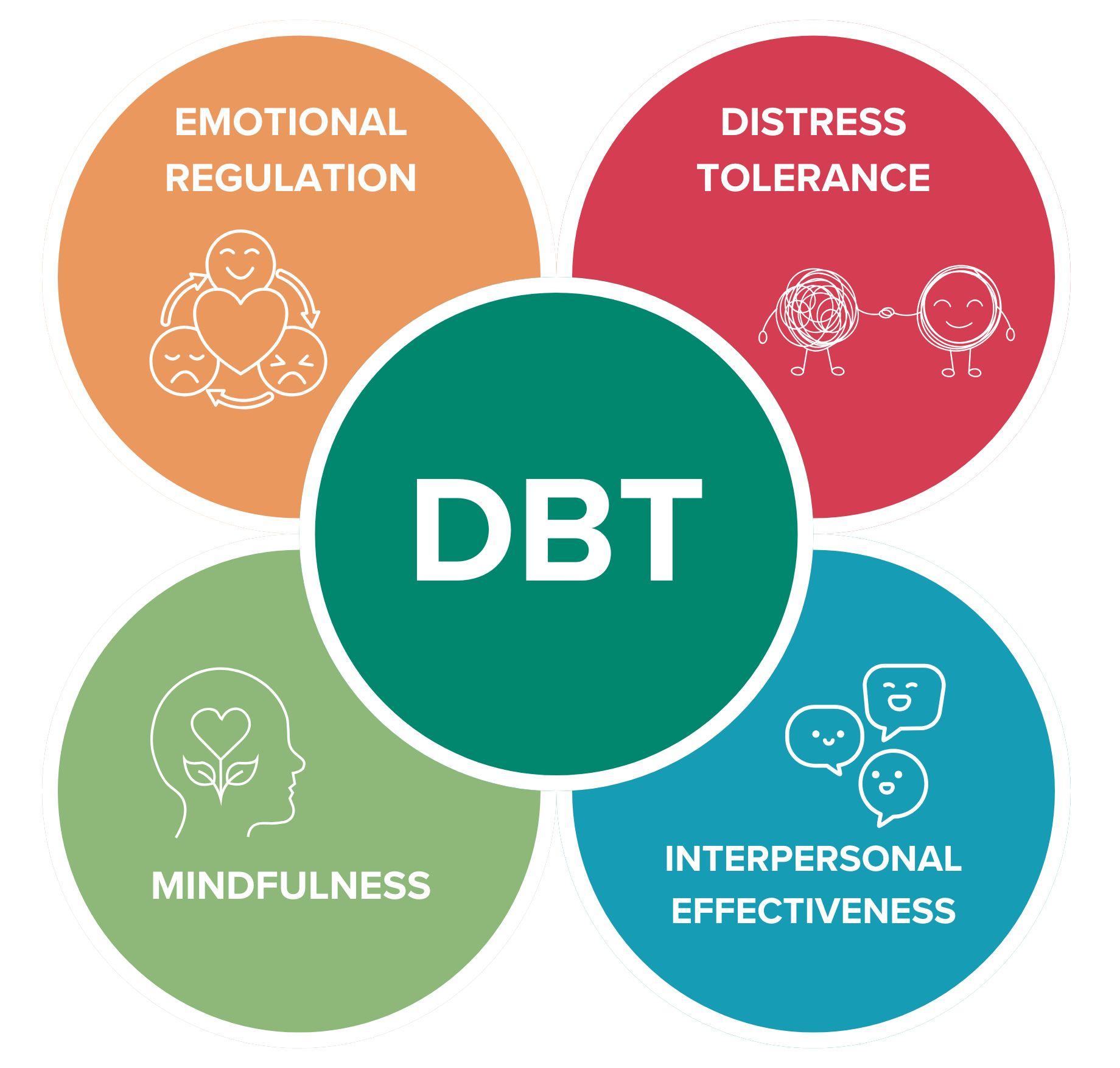





● Phase 2 - Exposure
Focuses on review of trauma
○ Aim is re-experiencing traumatic events in which the client feels safe ○ Evidenced based protocol (APA Guidelines)
■ TF-CBT
■ CPT
■ Prolonged Exposure Therapy

● Phase 3 - Transition back to everyday life
○ Goal is to reinforce the emotional, social, and relationship skills of the client
○ Positive psychology is the science of what is needed for a good life.
○ Assessment (Slade, 2010)
■ 1. Deficiencies and undermining characteristics of the person
■ 2. Strengths and assets of the person
■ 3. Lacks and destructive factors in the environment
■ 4. Resource and opportunities in the environment

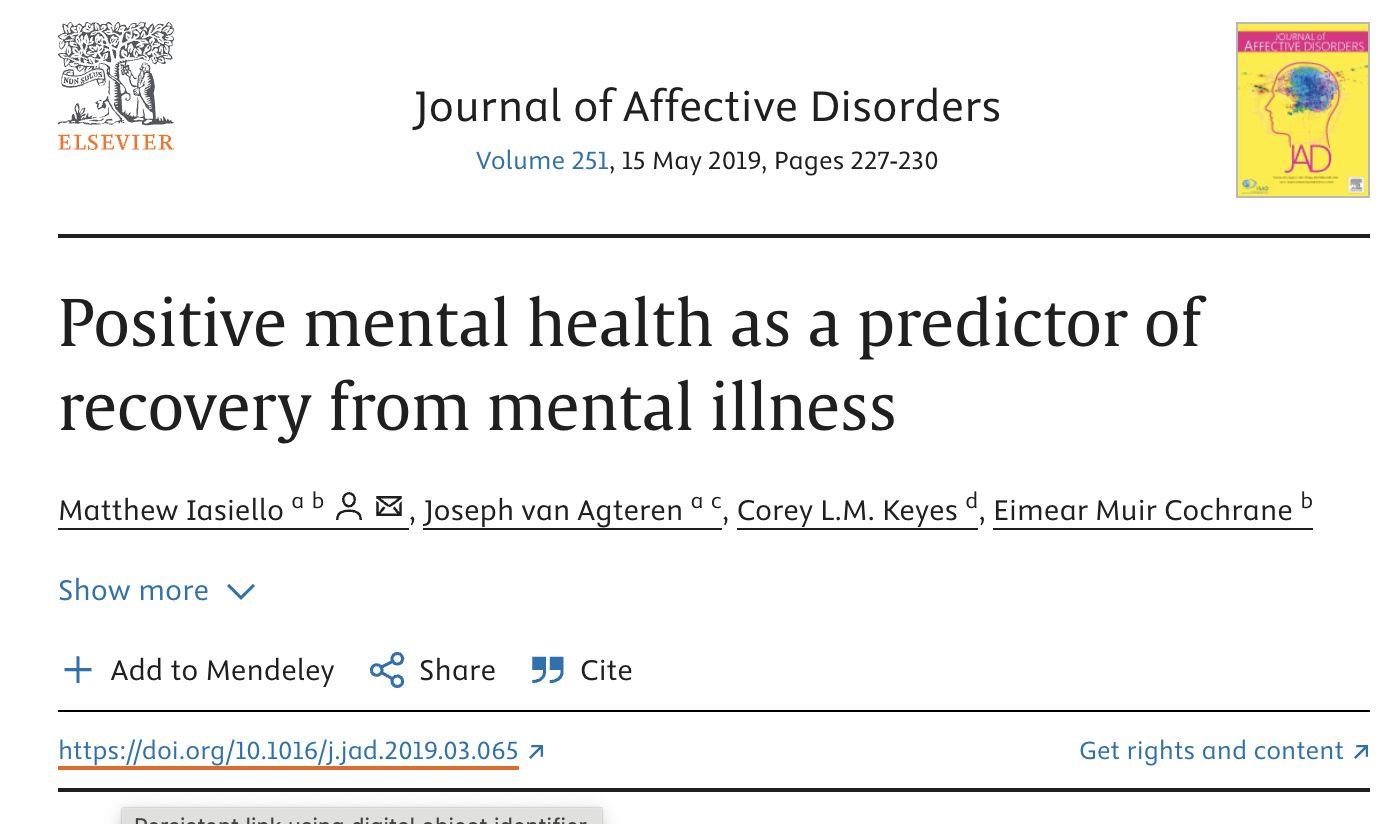





● PTG refers to the positive psychological changes that may occur after experiencing a traumatic event
● Manifestations of these posttraumatic benefits include greater appreciation for life, more meaningful interpersonal relationships, enhanced spiritual beliefs, a new-found purpose in life, and an increased sense of personal strength [9]
● “Current research indicates that psychological distress following trauma may be necessary to initiate the cognitive processes that may help facilitate PTG.” [9, p. 2]
● Higher levels of PTG correspond with higher levels of quality of life [9]

PTG helps individuals live a fuller and more meaningful life, it does not allow a return to normality.
it would appear that PTG and psychological comfort may be distinct constructs. Indeed, the literature mostly suggests that “growth will not necessarily decrease pain or increase happiness, but on the contrary, significant growth may only occur when it is preceded by, or when it occurs together with significant amounts of subjective distress”
(Tedeschi, Park & Calhoun, 1998, p.217)

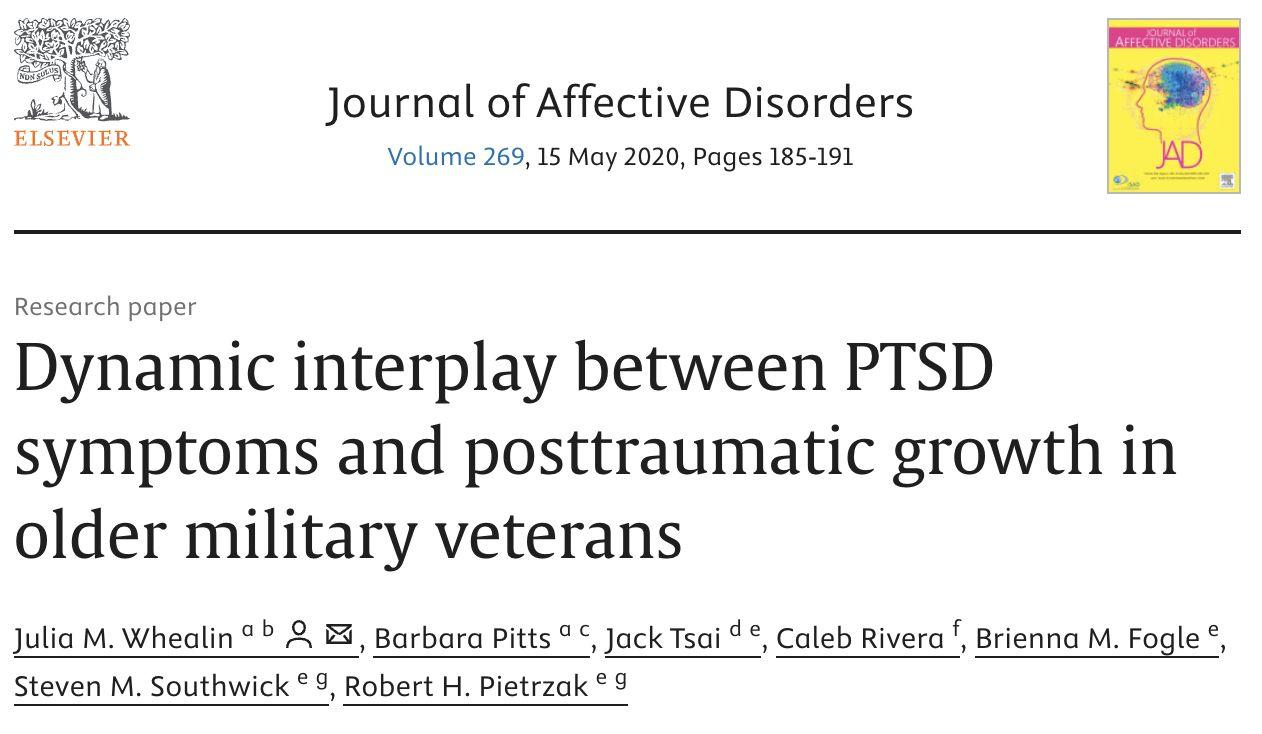




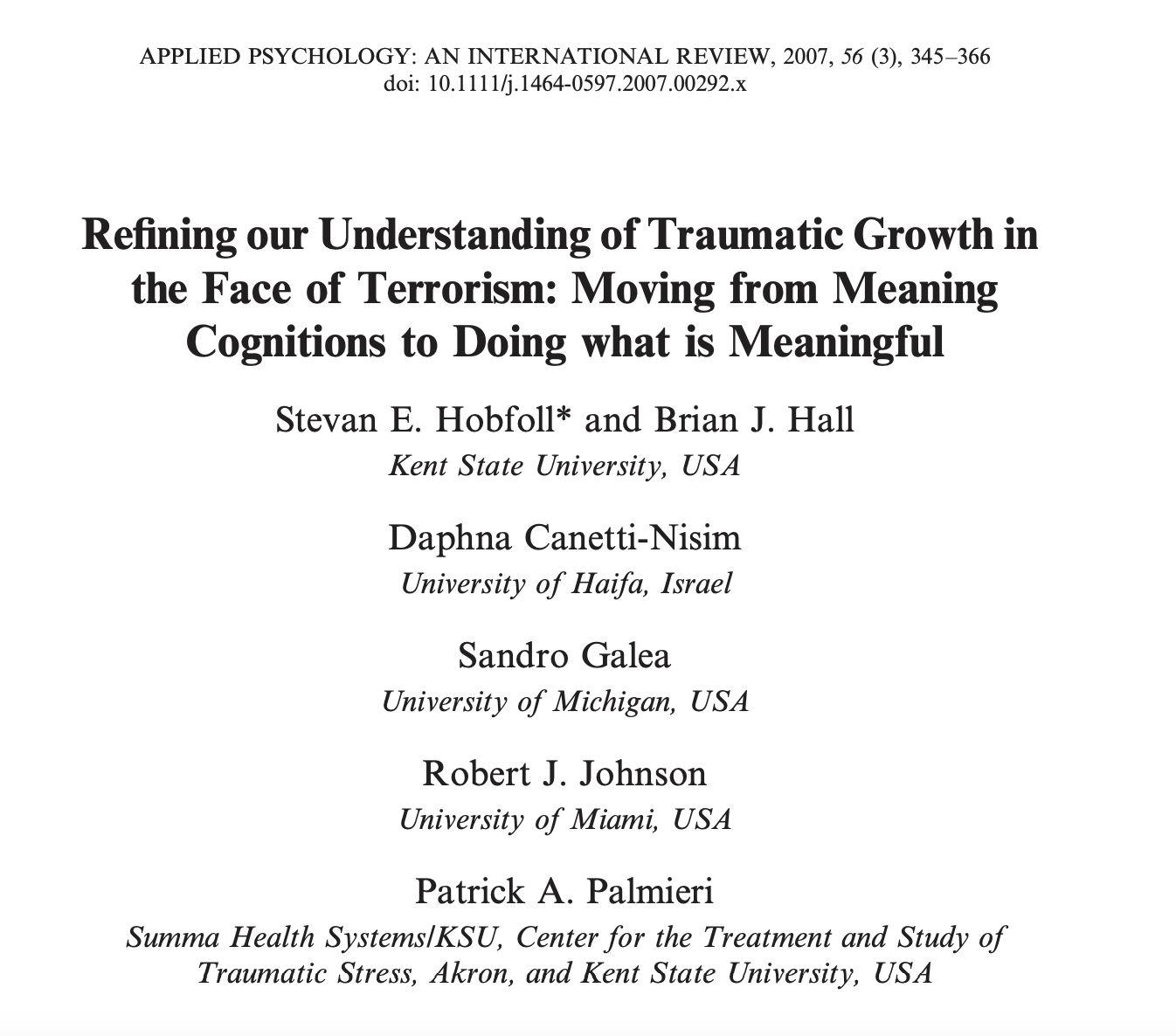

● “Indeed, while Calhoun and Tedeschi (2014) tend to describe the growth process as a search for meaning (e.g. cognitive engagement), Hobfoll et al. (2007) make a distinction between growth actions and growth cognitions, stating that cognitive change alone is not sufficient for growth to occur. Indeed, they show in one of their studies that PTG may only be beneficial if it includes taking action.” [9]
● Posttraumatic Growth Actions play an important role in the reduction of posttraumatic stress reduction [9]



“In line with Victor Frankl’s (1959) existential discourse and the weighty evidence of behavioral activation in the behavioral and cognitive behavioral tradition (Jacobson, Martell, & Dimidjian, 2001; Martell, Addis, & Dimidjian, 2004), we now conceptualise true posttraumatic growth not simply as cognitive process, or intellectual exercise in reframing, but salutogenesis through action growth whereby an individual actualises their benefit-finding cognitions—or reifies their illusions through action.” [10]

● Self‐determination theory (SDT) is a macro‐theory of human motivation, personality development, and well‐being [12]
● Universal psychological needs
Autonomy
Competency ○ Relatedness
● Posits that psychological health involves the fulfillment of all three needs

1. Budd, R., & Hughes, I. (2009). The Dodo Bird Verdict--controversial, inevitable and important: a commentary on 30 years of meta-analyses. Clinicalpsychology&psychotherapy, 16(6), 510–522. https://doi.org/10.1002/cpp.648
2. Kirkbride, J. B., Anglin, D. M., Colman, I., Dykxhoorn, J., Jones, P. B., Patalay, P., ... & Griffiths, S. L. (2024). The social determinants of mental health and disorder: evidence, prevention and recommendations. Worldpsychiatry, 23(1), 58-90.
3. Han, H. R., Miller, H. N., Nkimbeng, M., Budhathoki, C., Mikhael, T., Rivers, E., ... & Wilson, P. (2021). Trauma informed interventions: A systematic review. PloSone, 16(6), e0252747.
4. Brewin, C. R., Atwoli, L., Bisson, J. I., Galea, S., Koenen, K., & Lewis‐Fernández, R. (2025). Post‐traumatic stress disorder: evolving conceptualization and evidence, and future research directions. WorldPsychiatry, 24(1), 52-80.
5. Steinert C, Hofmann M, Leichsenring F et al. The course of PTSD in naturalistic long- term studies: high variability of outcomes. A systematic review. Nord J Psychiatry 2015;69:483-96.
6. Weinberg M, Gil S. Trauma as an objective or subjective experience: the association between types of traumatic events, personality traits, subjective experience of the event, and posttraumatic symptoms. J Loss Trauma 2016;21:137-46
7. Masten, A. S., Lucke, C. M., Nelson, K. M., & Stallworthy, I. C. (2021). Resilience in development and psychopathology: Multisystem perspectives. Annualreviewofclinicalpsychology, 17(1), 521-549.

8. Southwick, S. M., & Charney, D. S. (2021). Resilience for Frontline Health Care Workers: Evidence-Based Recommendations. TheAmericanjournalofmedicine, 134(7), 829–830. https://doi.org/10.1016/j.amjmed.2021.02.010
9. Kautz MM, Collins A, Schechter CB, et al. Longitudinal Trajectories of PTSD Symptoms Predict Levels of Posttraumatic Growth in World Trade Center Responders. ChronicStress. 2022;6. doi:10.1177/24705470221122898
10. Hobfoll, S. E., Hall, B. J., Canetti‐Nisim, D., Galea, S., Johnson, R. J., & Palmieri, P. A. (2007). Refining our understanding of traumatic growth in the face of terrorism: Moving from meaning cognitions to doing what is meaningful. AppliedPsychology, 56(3), 345-366.
11. Darby, R. J., Taylor, E. P., & Cadavid, M. S. (2023). Phase-based psychological interventions for complex post-traumatic stress disorder: A systematic review. JournalofAffectiveDisordersReports, 14, 100628.
12.Ryan, R. (2009). Self determination theory and well being. SocialPsychology, 84(822), 848.
13. Keyes, C. (2025). Languishing:Howtofeelaliveagaininaworldthatwearsusdown. Random House.
14. Maercker, A. Development of the new CPTSD diagnosis for ICD-11. bordpersonaldisordemotdysregul8, 7 (2021). https://doi.org/10.1186/s40479-021-00148-8

15. Maercker, A., Brewin, C. R., Bryant, R. A., Cloitre, M., Reed, G. M., Van Ommeren, M., ... & Saxena, S. (2013). Proposals for mental disorders specifically associated with stress in the International Classification of Diseases-11. The Lancet, 381(9878), 1683-1685.
16. Deak, J. D., Miller, A. P., & Gizer, I. R. (2019). Genetics of alcohol use disorder: a review. Currentopinionin psychology, 27, 56–61. https://doi.org/10.1016/j.copsyc.2018.07.012
17. Góralczyk-Bińkowska, A., Szmajda-Krygier, D., & Kozłowska, E. (2022). The microbiota–gut–brain axis in psychiatric disorders. Internationaljournalofmolecularsciences, 23(19), 11245
18. Liu, R. T., Walsh, R. F., & Sheehan, A. E. (2019). Prebiotics and probiotics for depression and anxiety: A systematic review and meta-analysis of controlled clinical trials. Neuroscience&BiobehavioralReviews, 102, 13-23.
19. Rubin et al (2016). Participant, rater, and computer measures of coherence in posttraumatic stress disorder. Journalof AbnormalPsychology,125(1), 11-25.

20.McNally (2022). The return of repression? Evidence from cognitive psychology. Topicsin CognitiveScience,00, 1-14.
21. Kangaslampi, S. & Peltonen, K. (2022). Mechanisms of change in psychological interventions for posttraumatic stress symptoms: A systematic review with recommendations. CurrentPsychology,41, 258-275.
22. Engel hard, I. M., McNally, R.J., & van Schie, K. (2019). Retrieving and modifying traumatic memories: Recent research relevant to the controversies. CurrentDirectionsin PsychologyScience,28(1), 91-96.
23.Patihi, L., Ho., L.Y., Tingen, I. W., Lilienfeld, S.O., & Loftus, E.F. (2014). Are the “memory wars” over? A scientistpractitioner gap in beliefs about repressed memory. PsychologicalSciences,25, 519-530.
